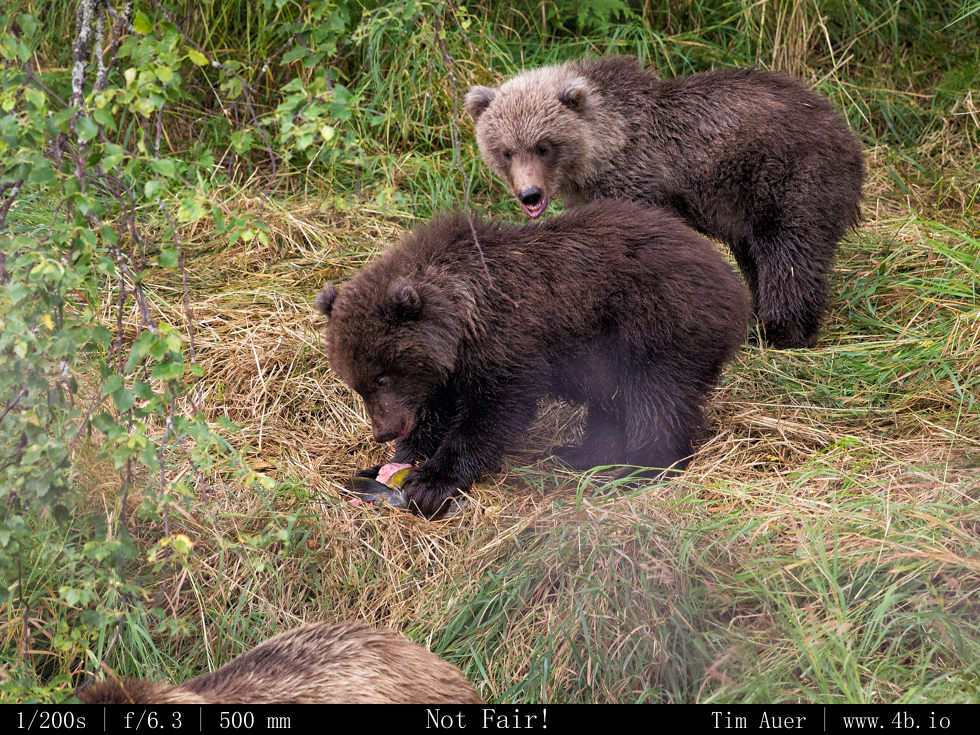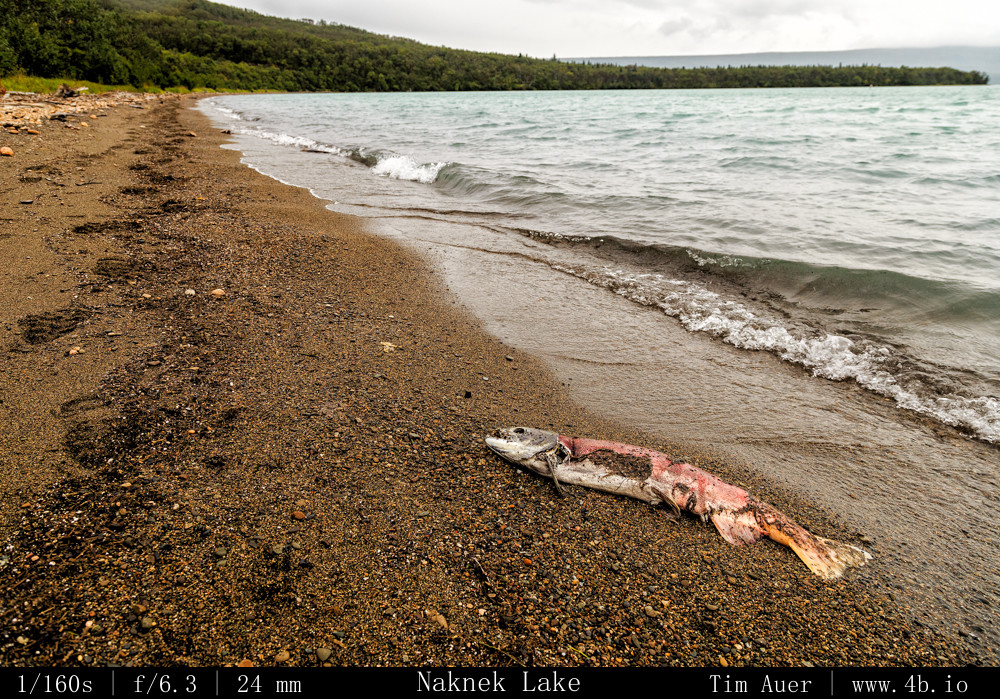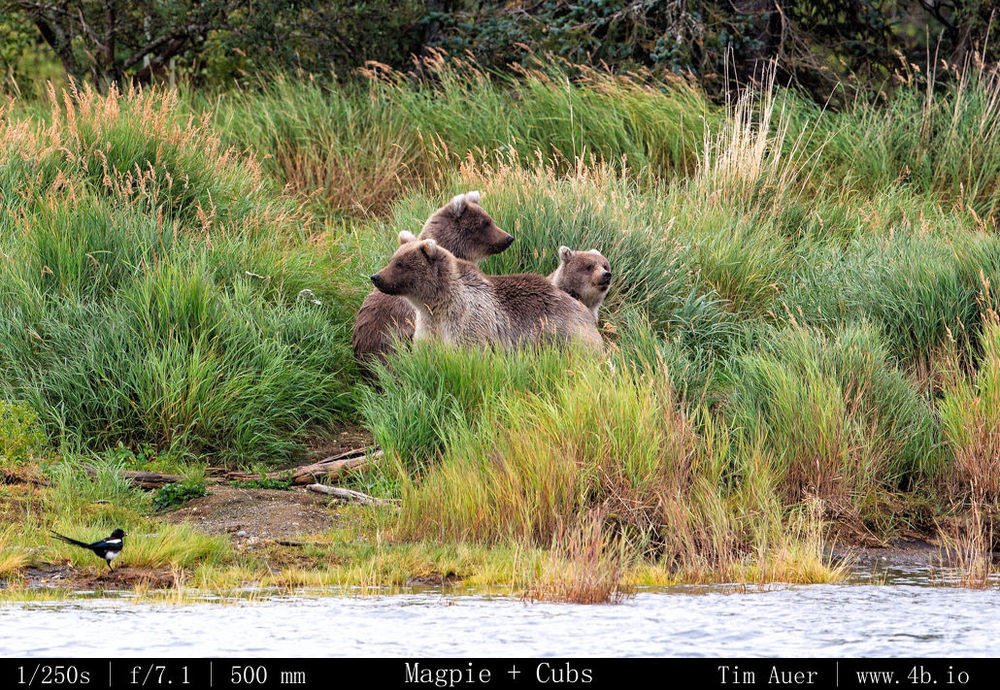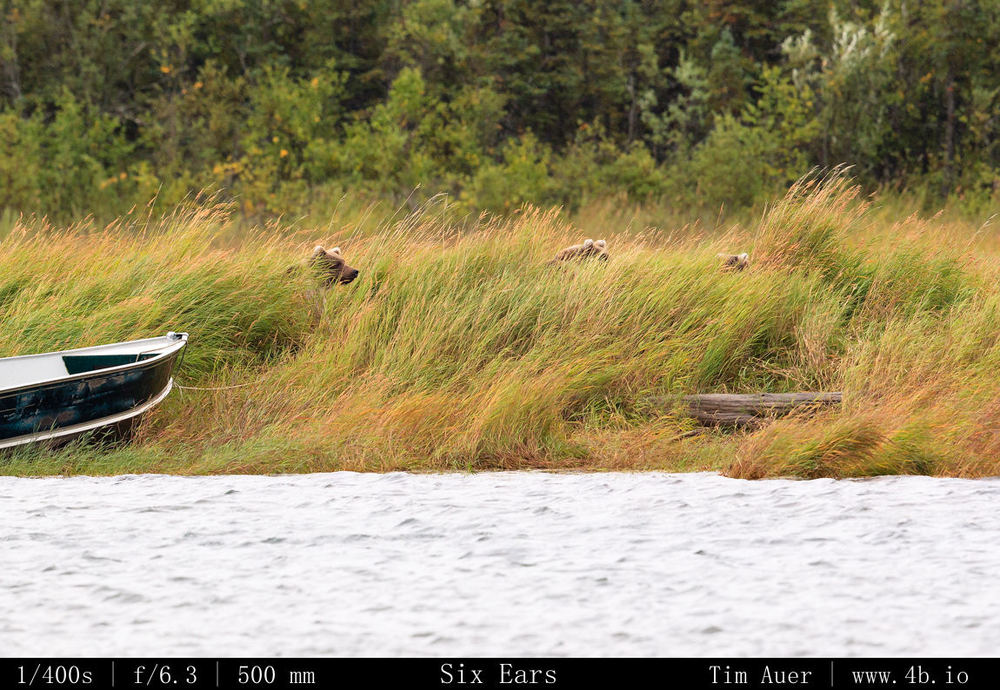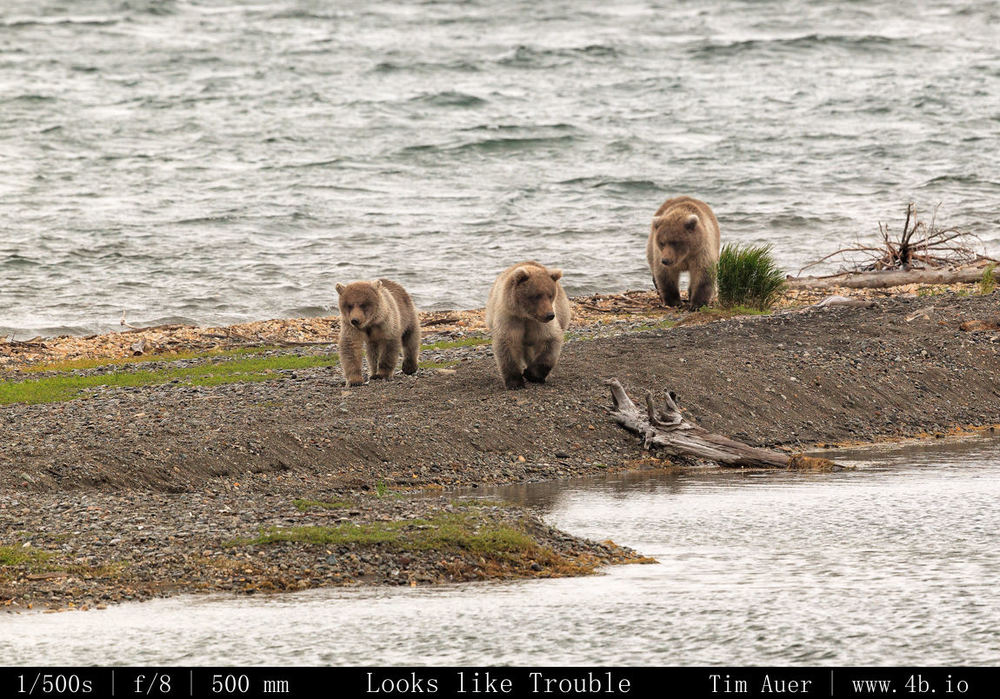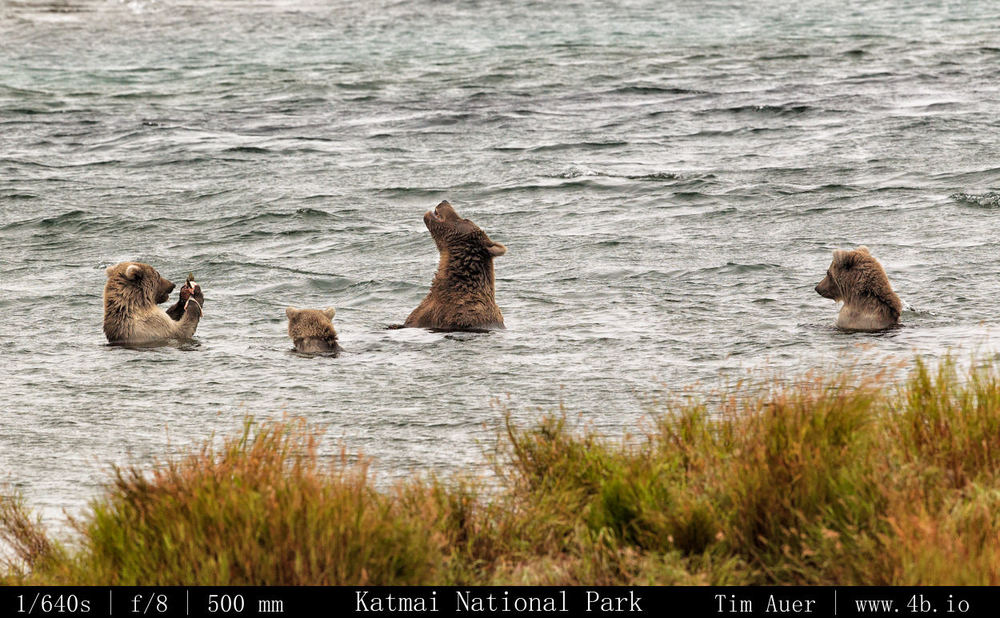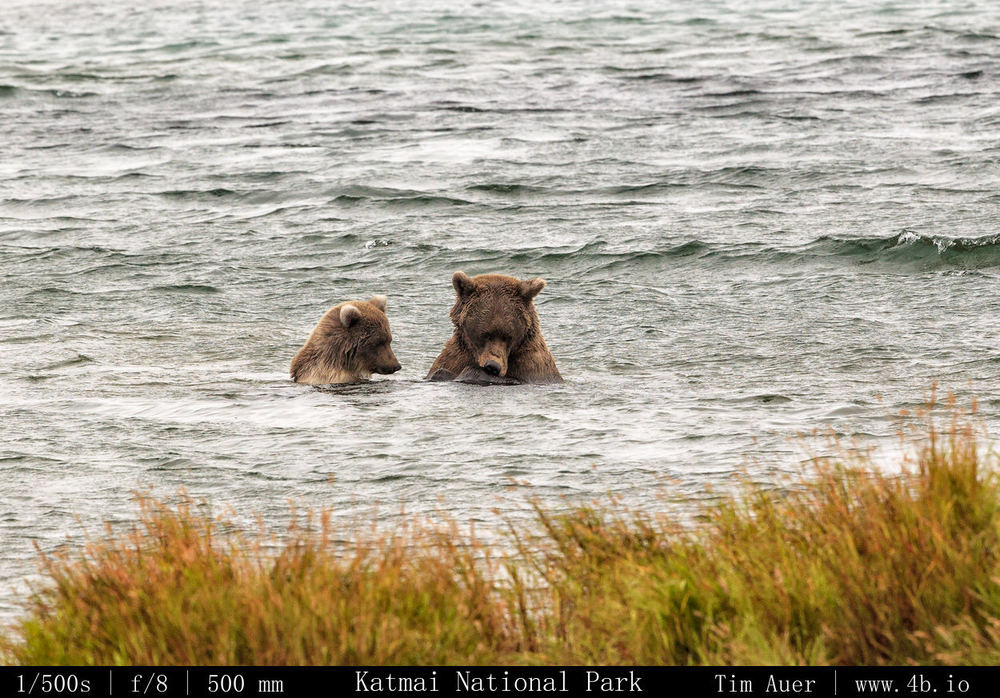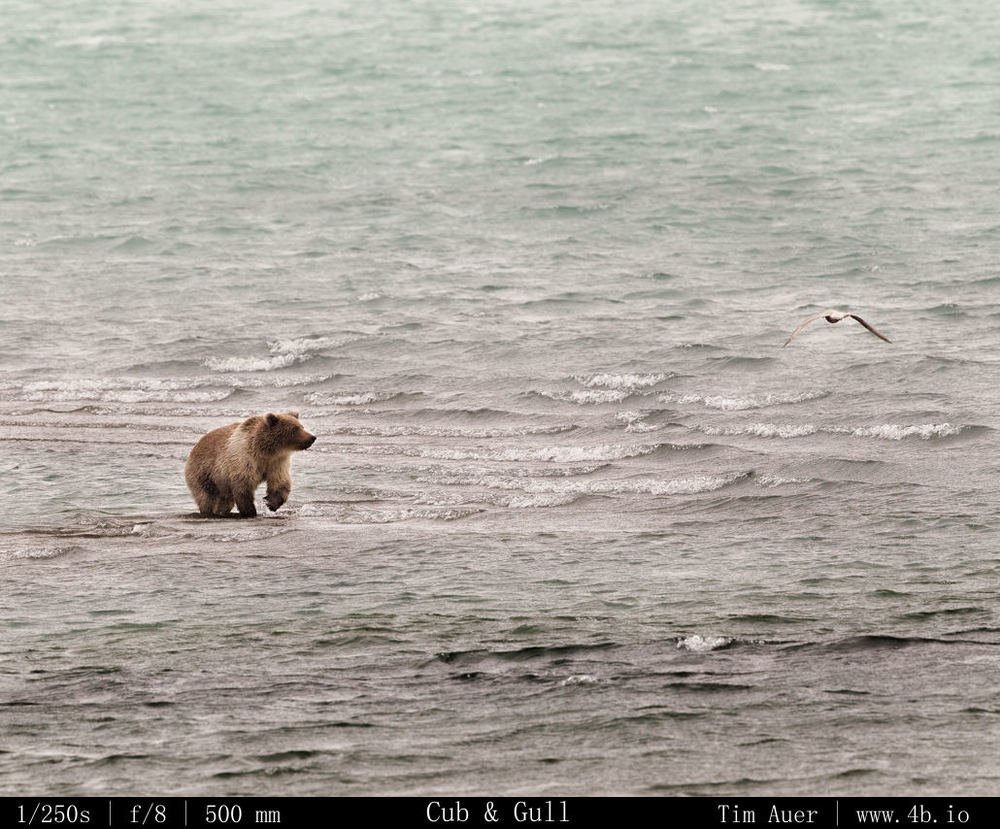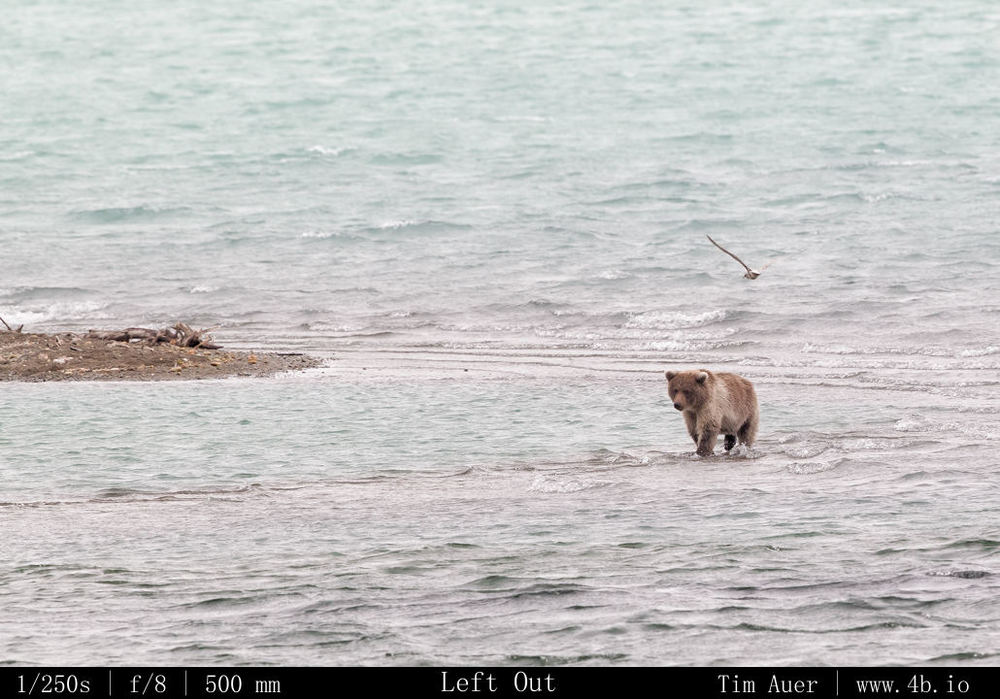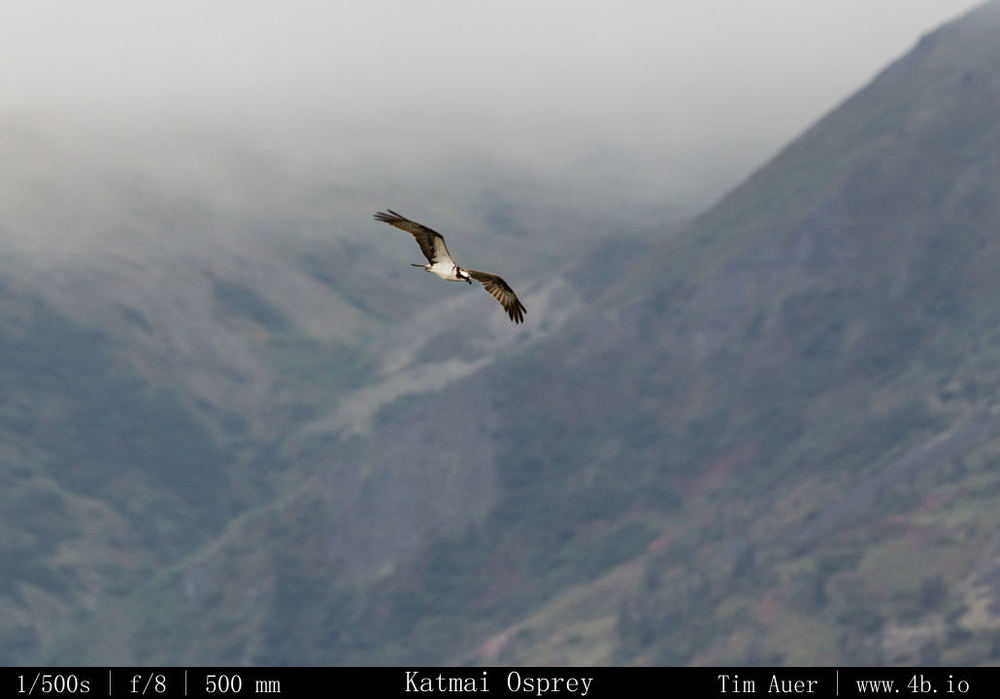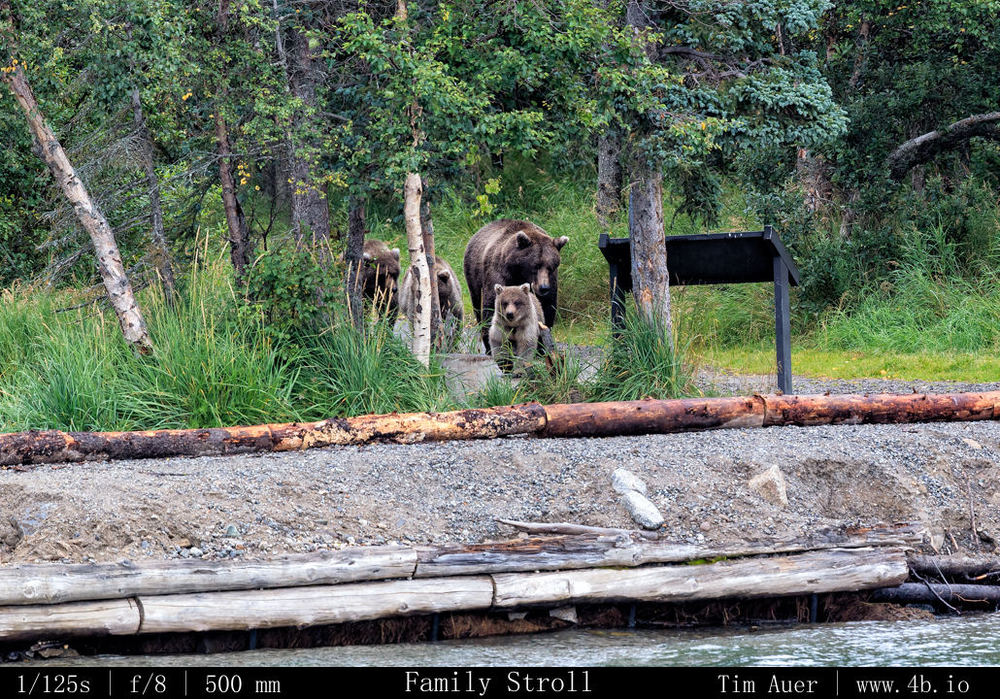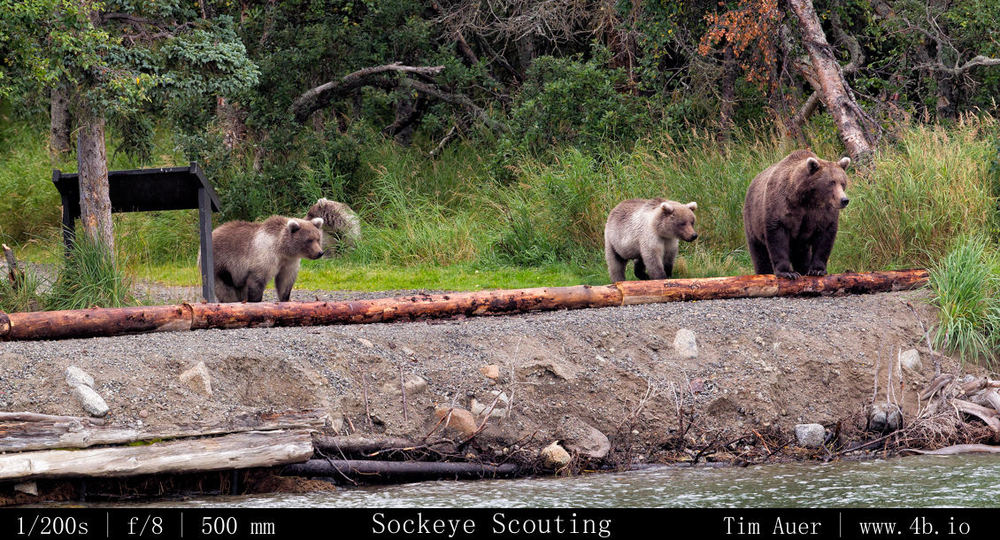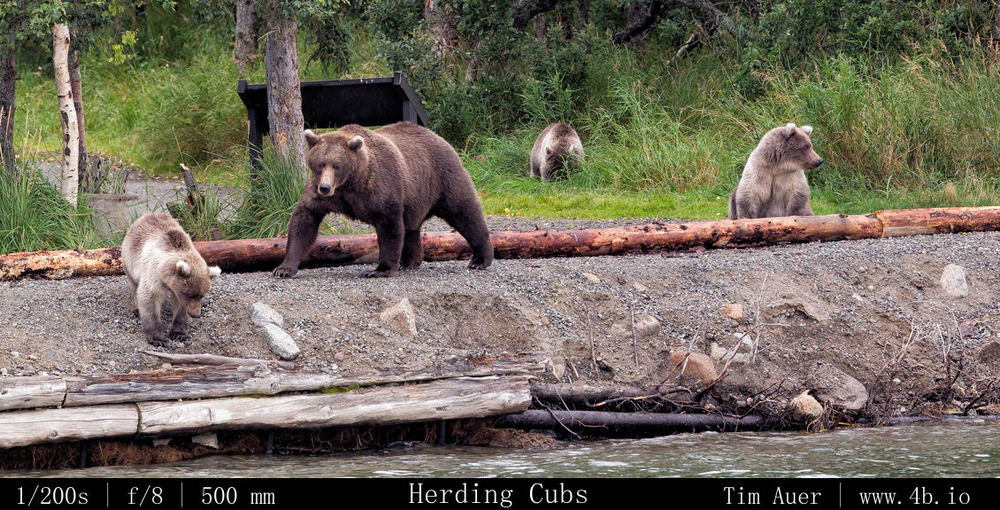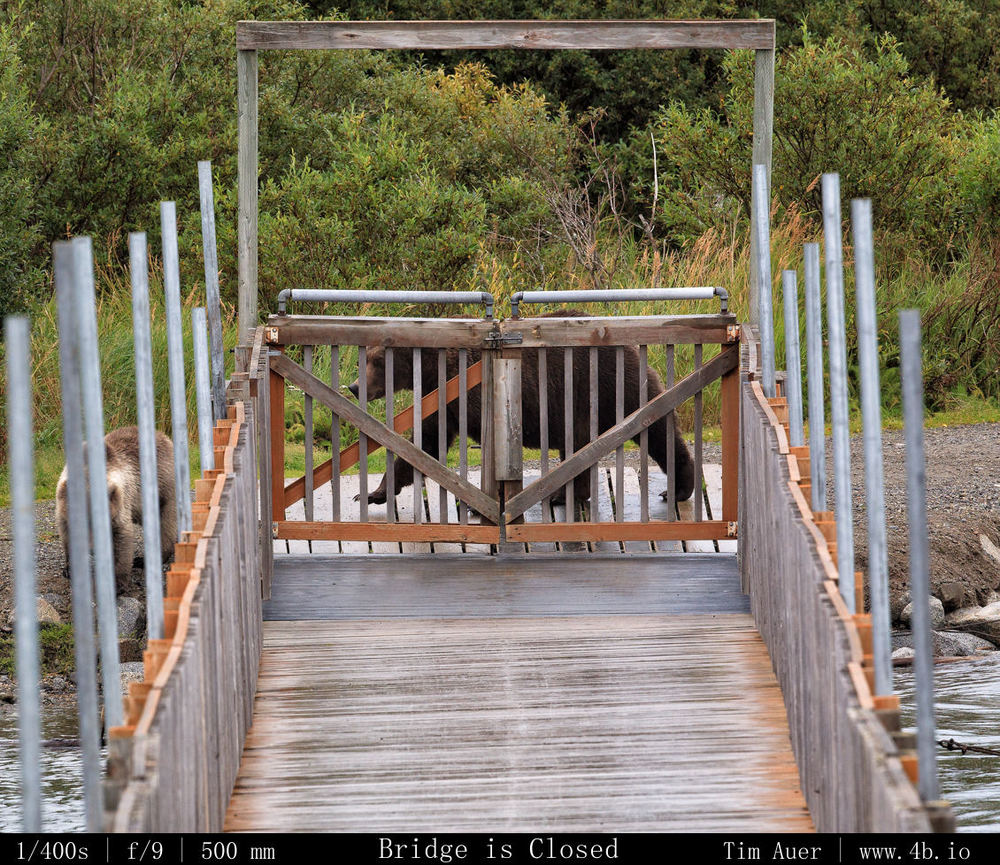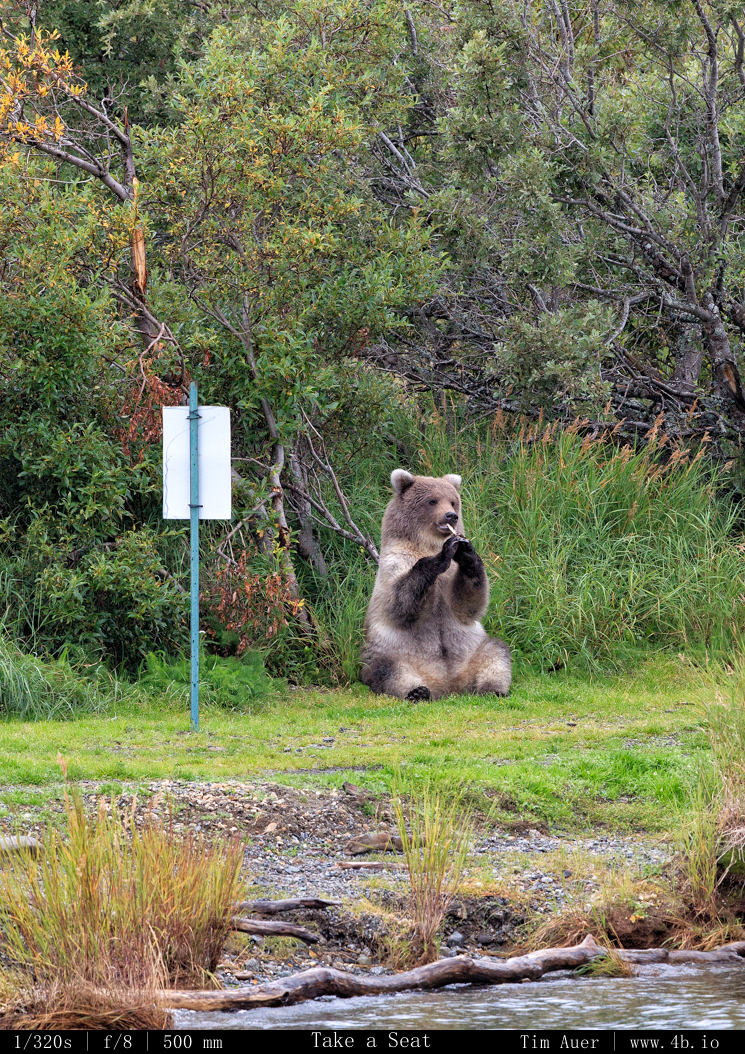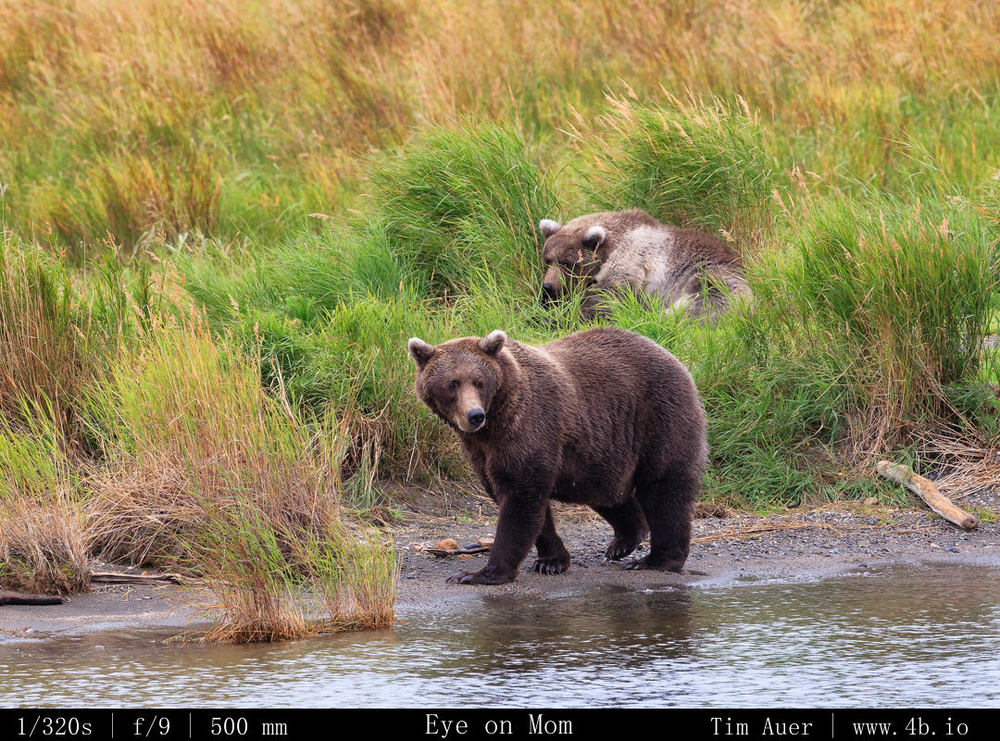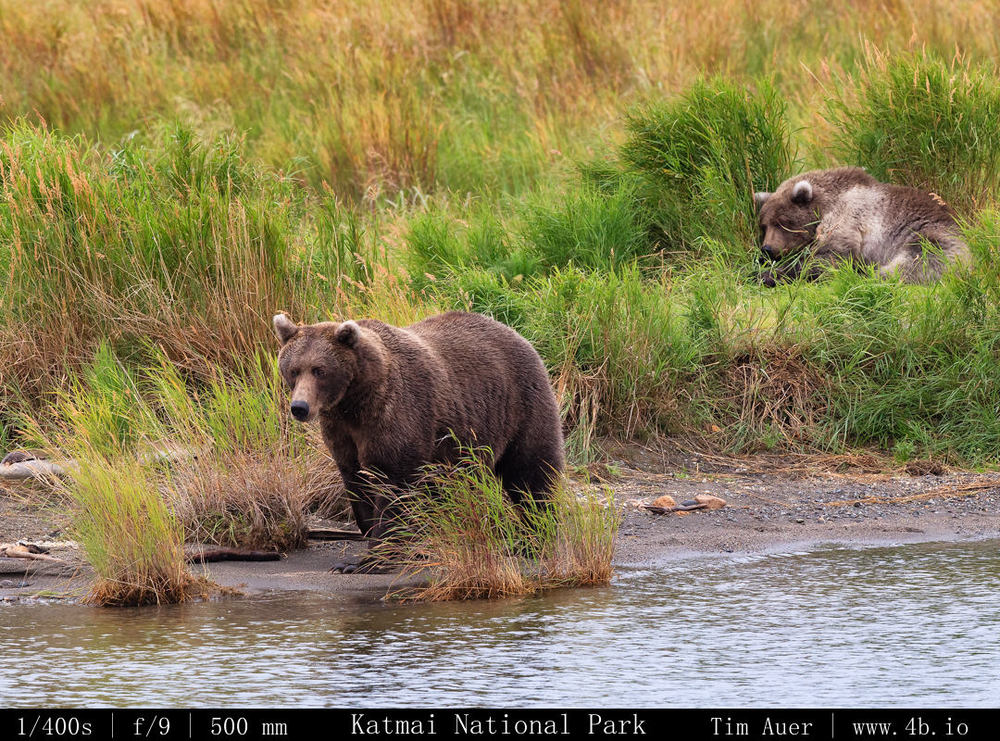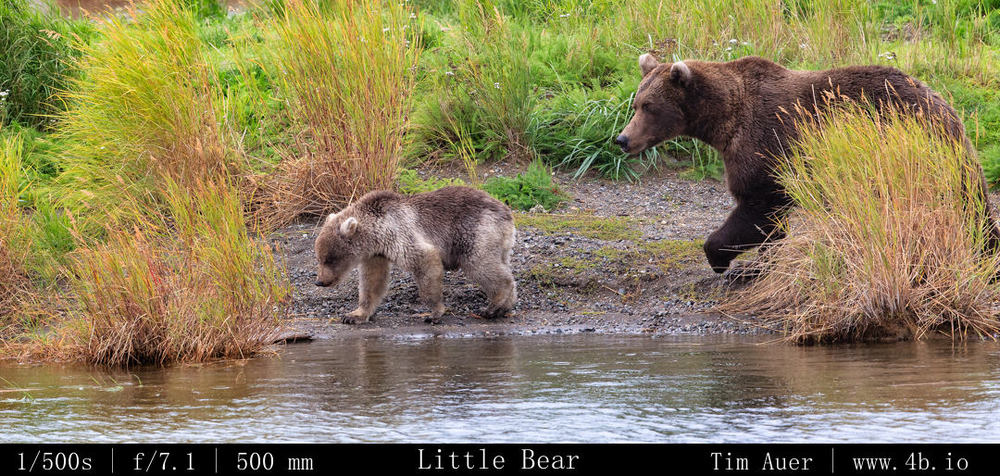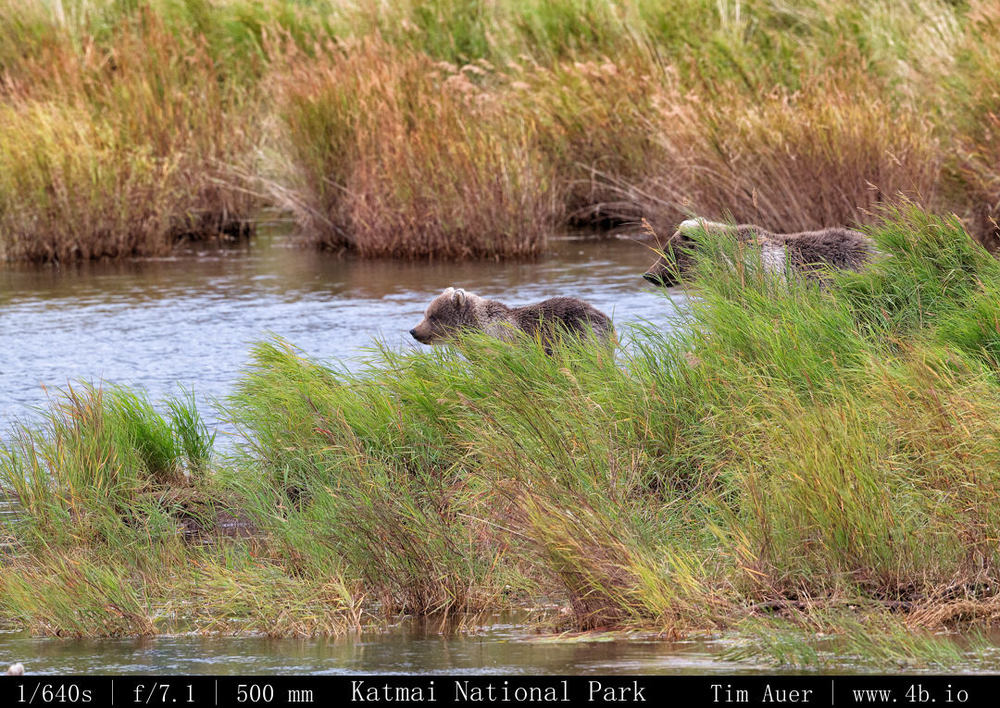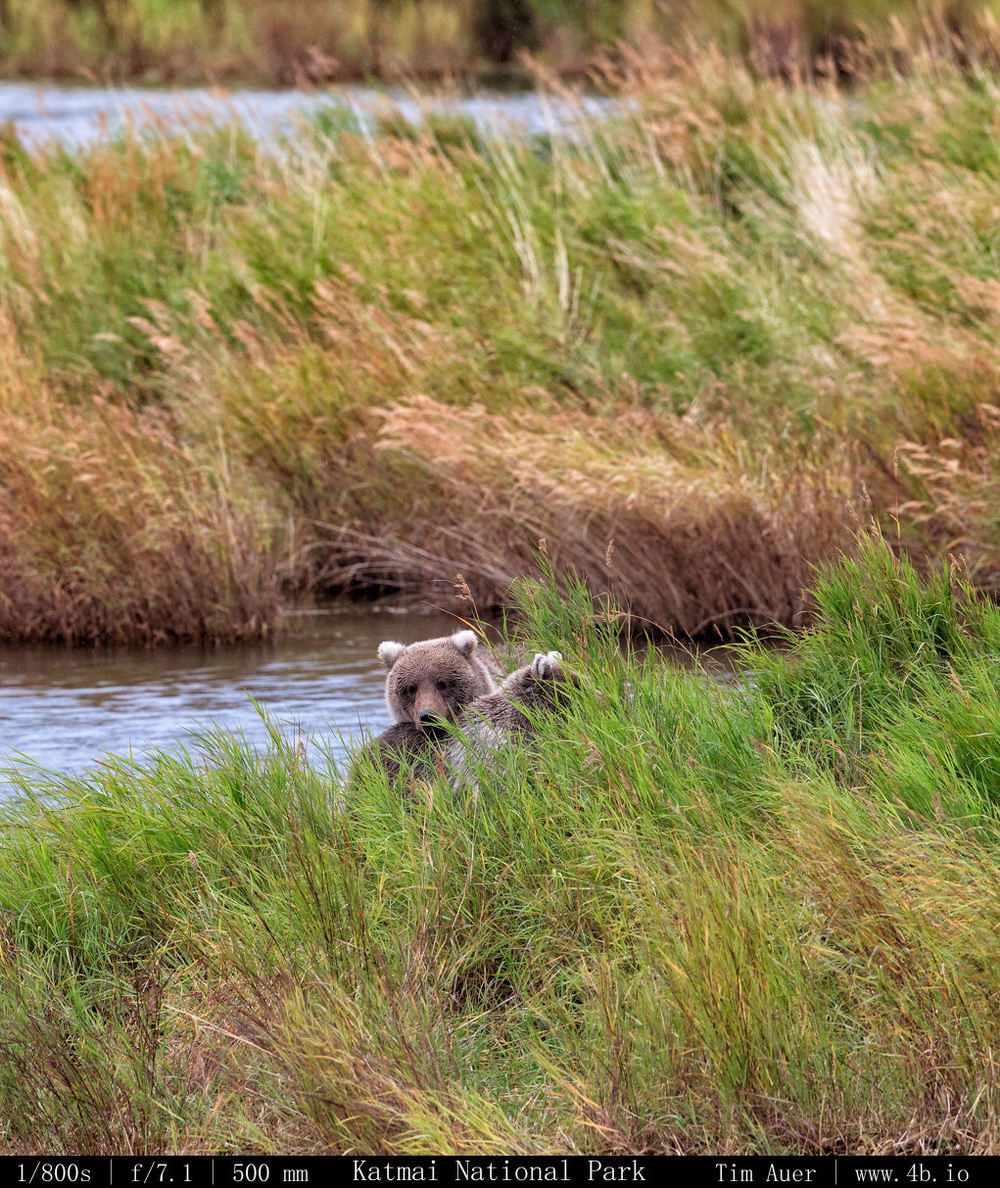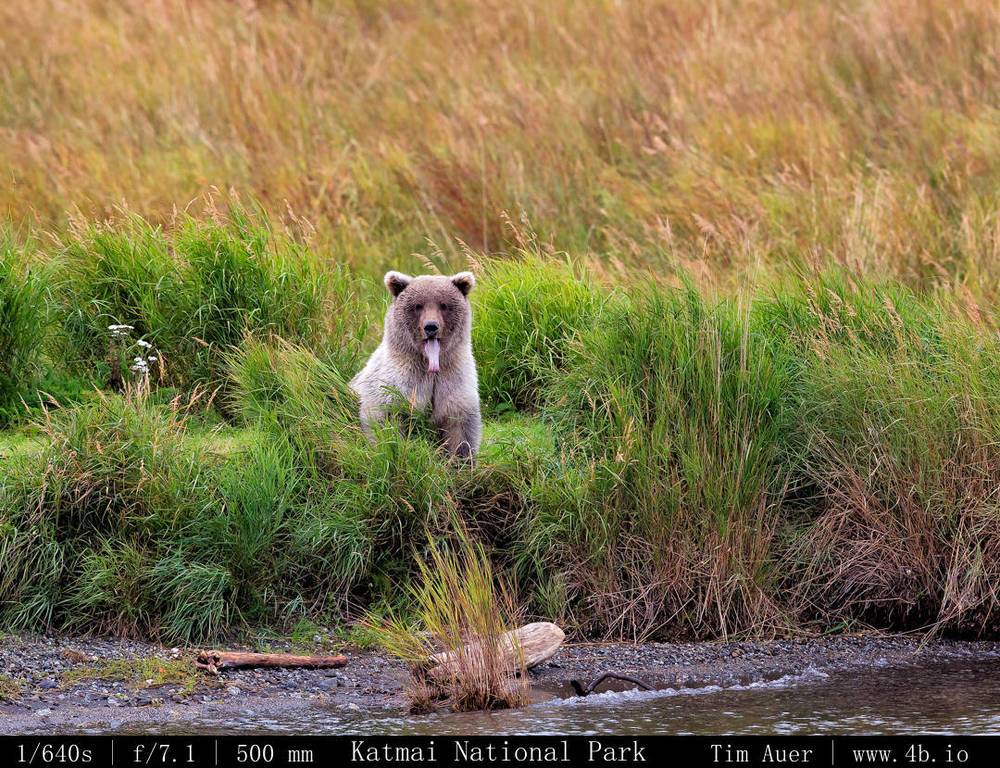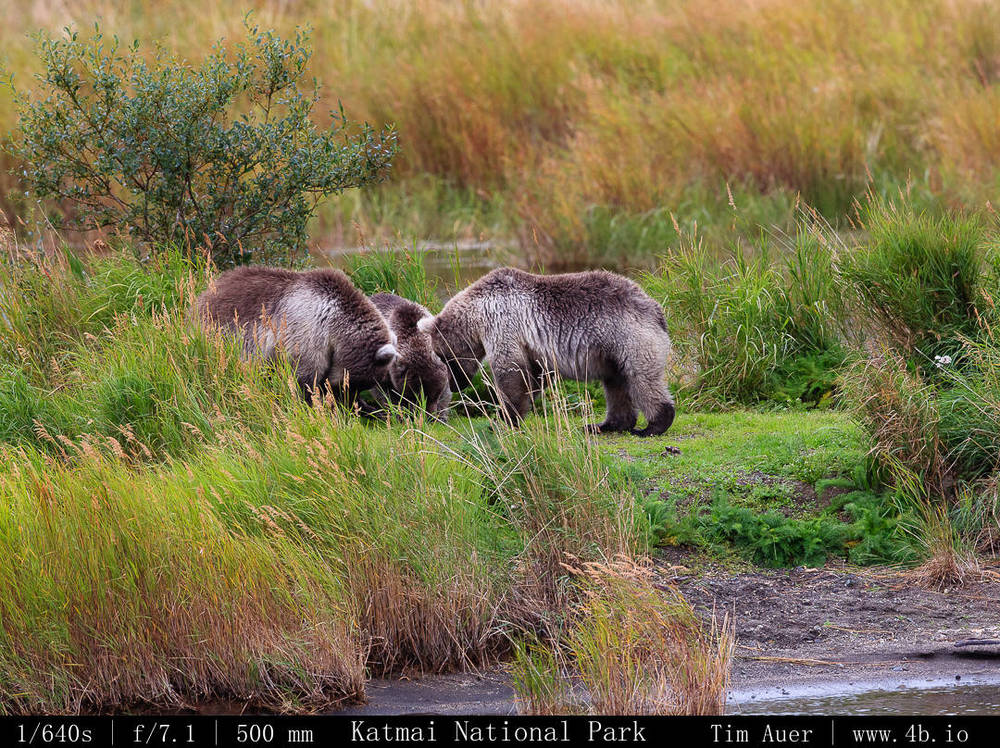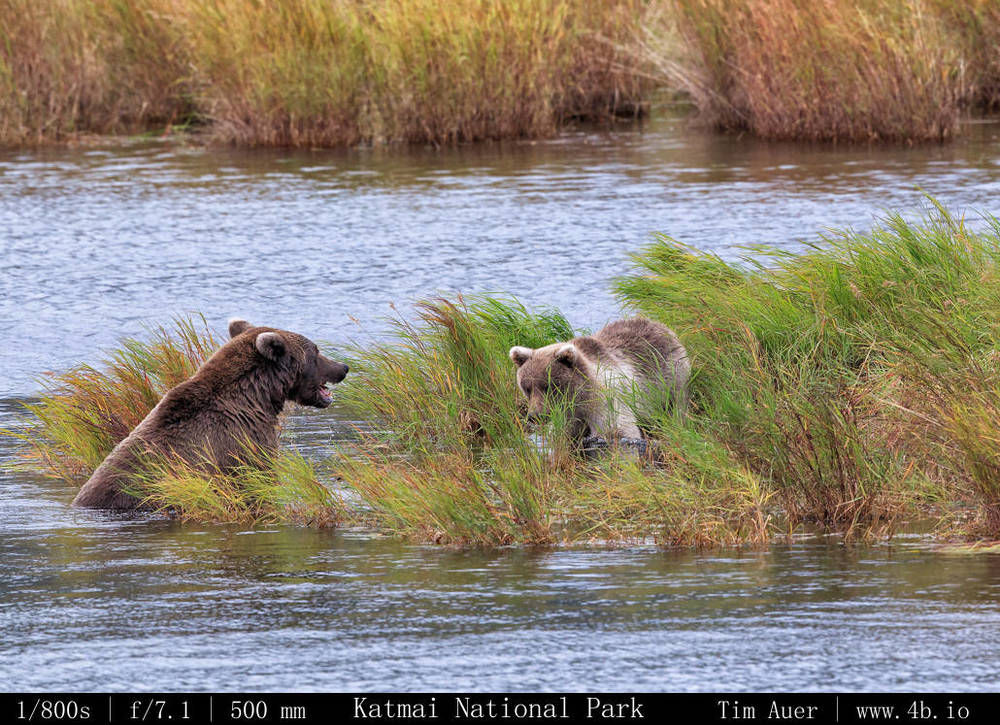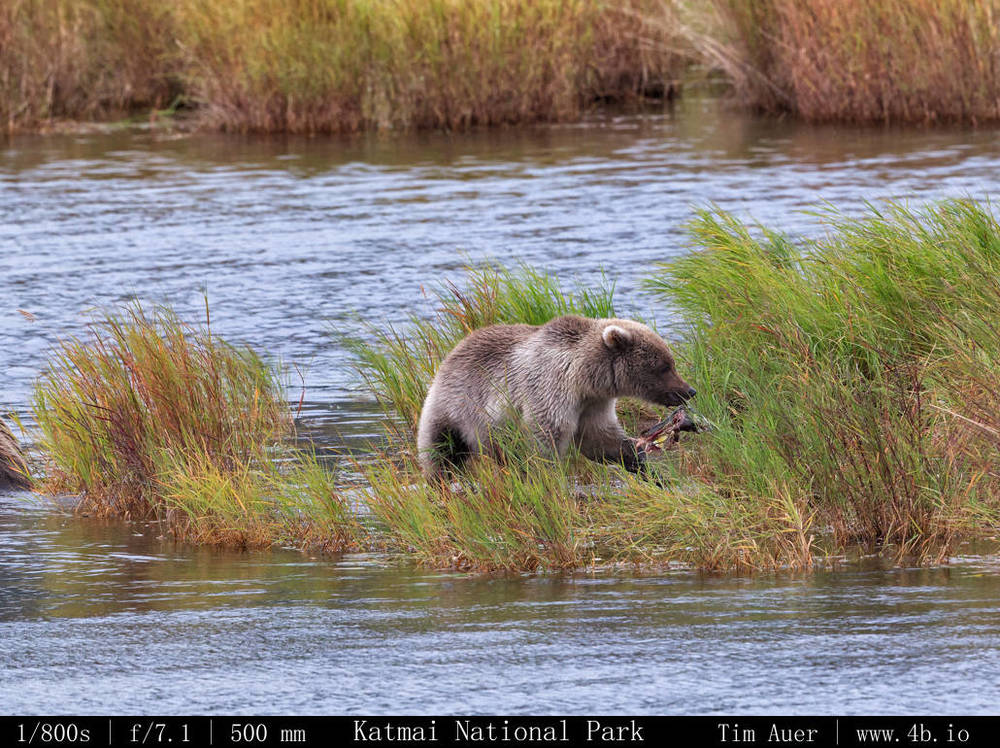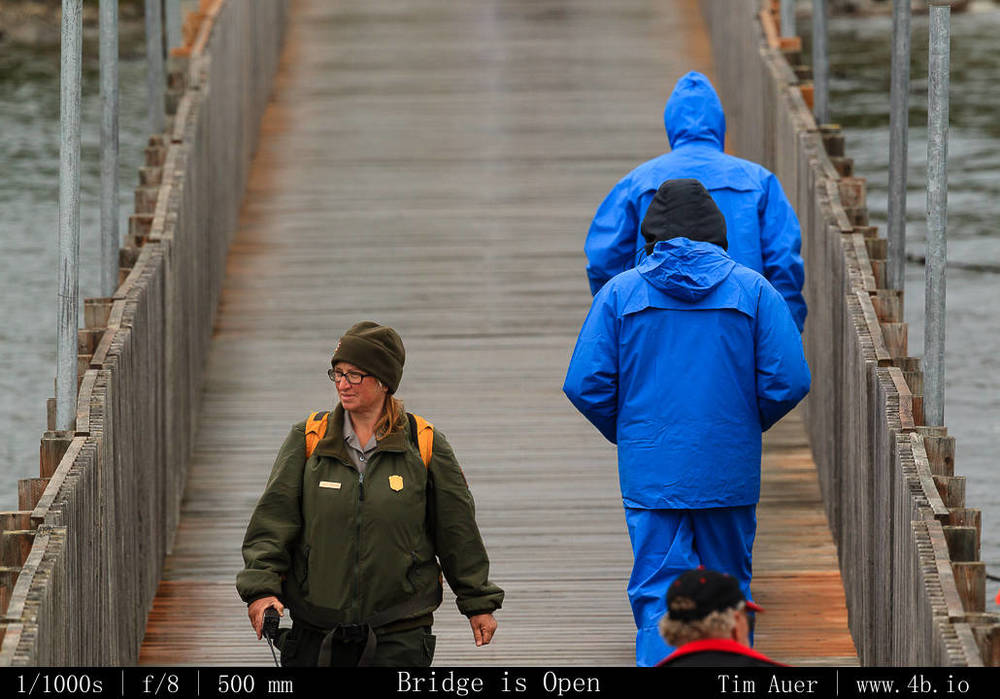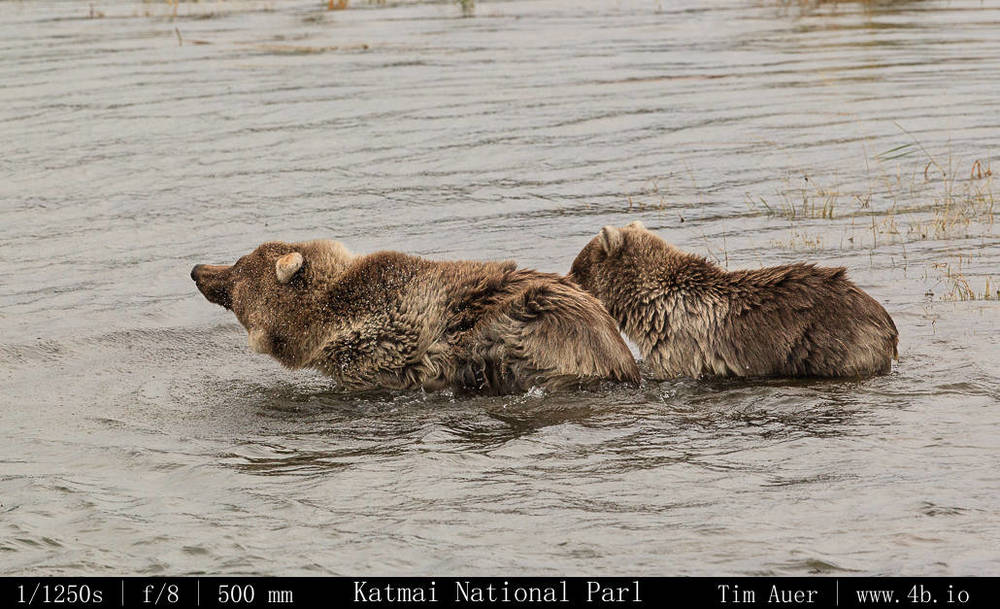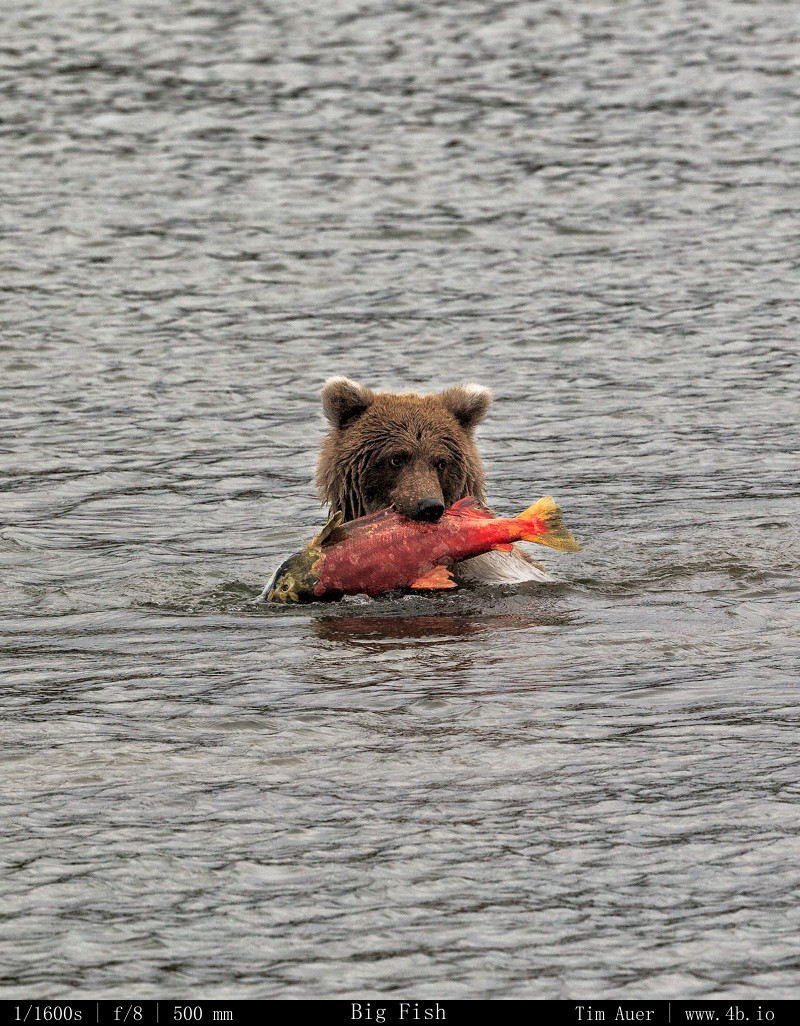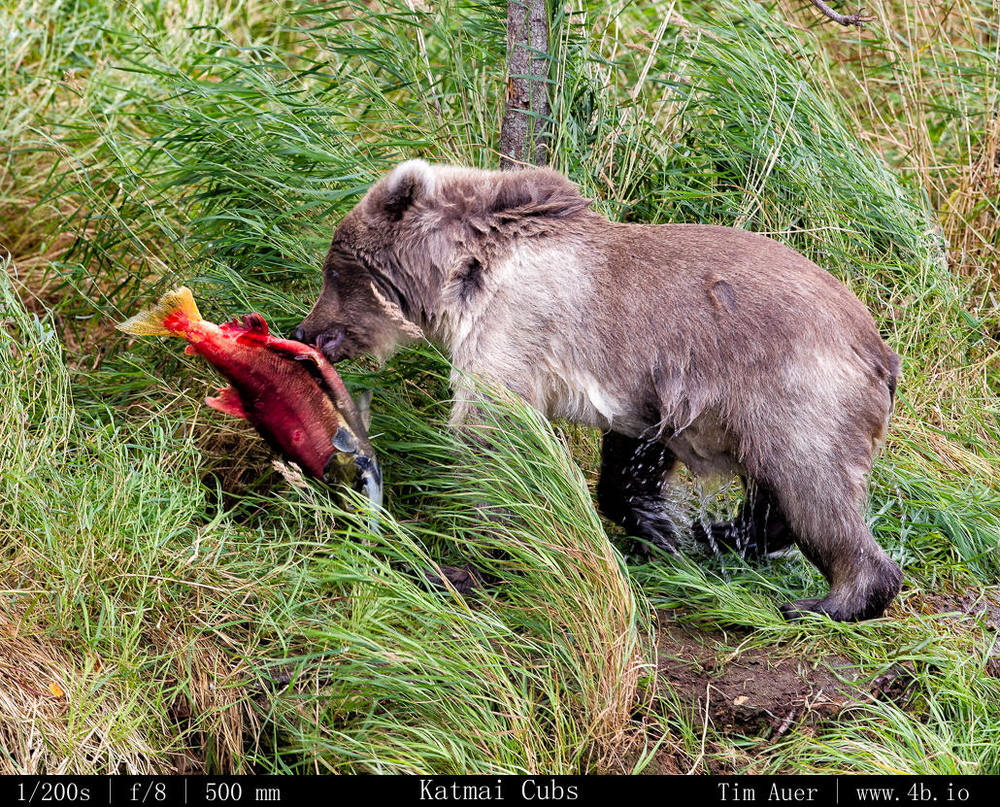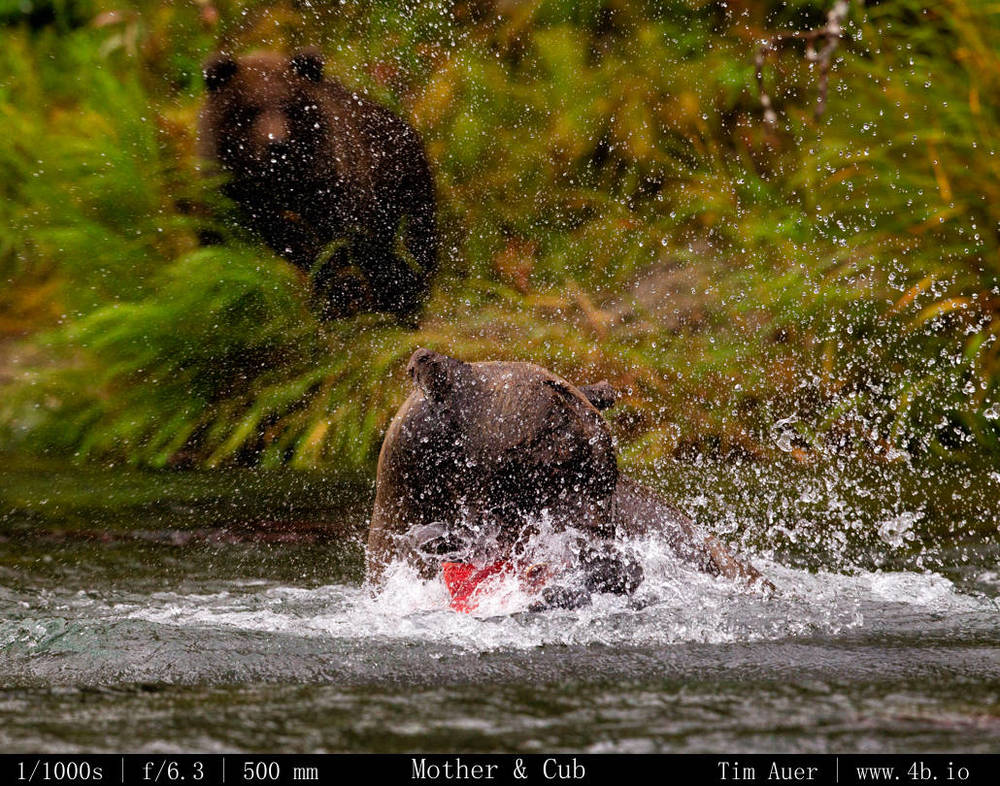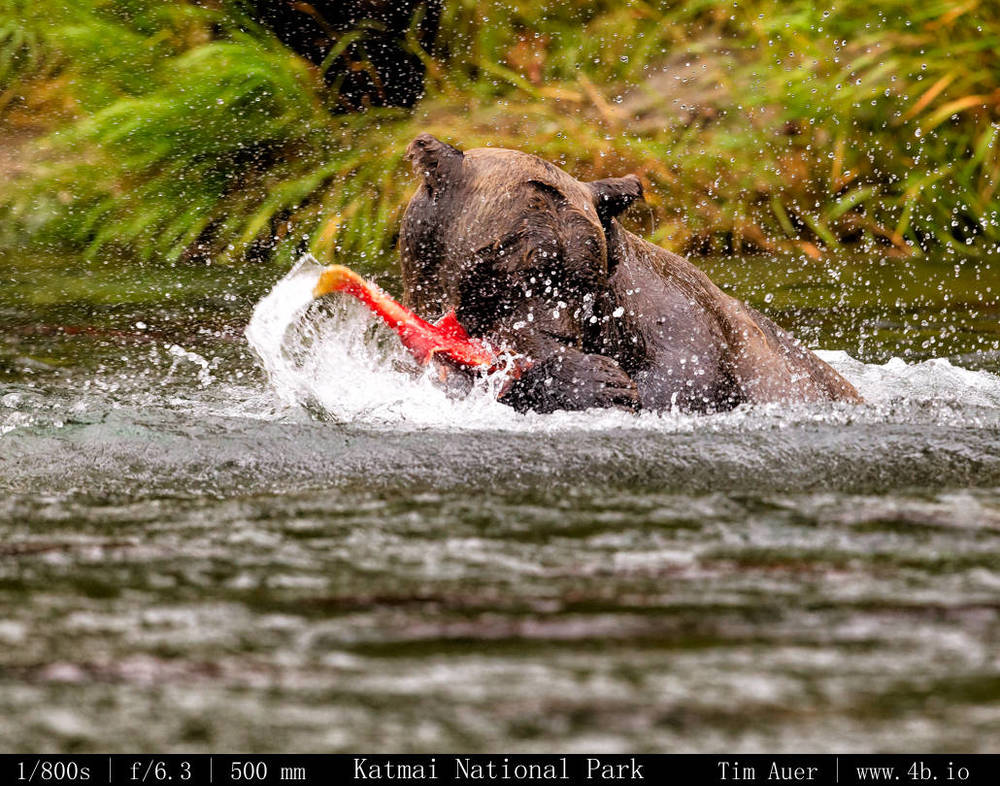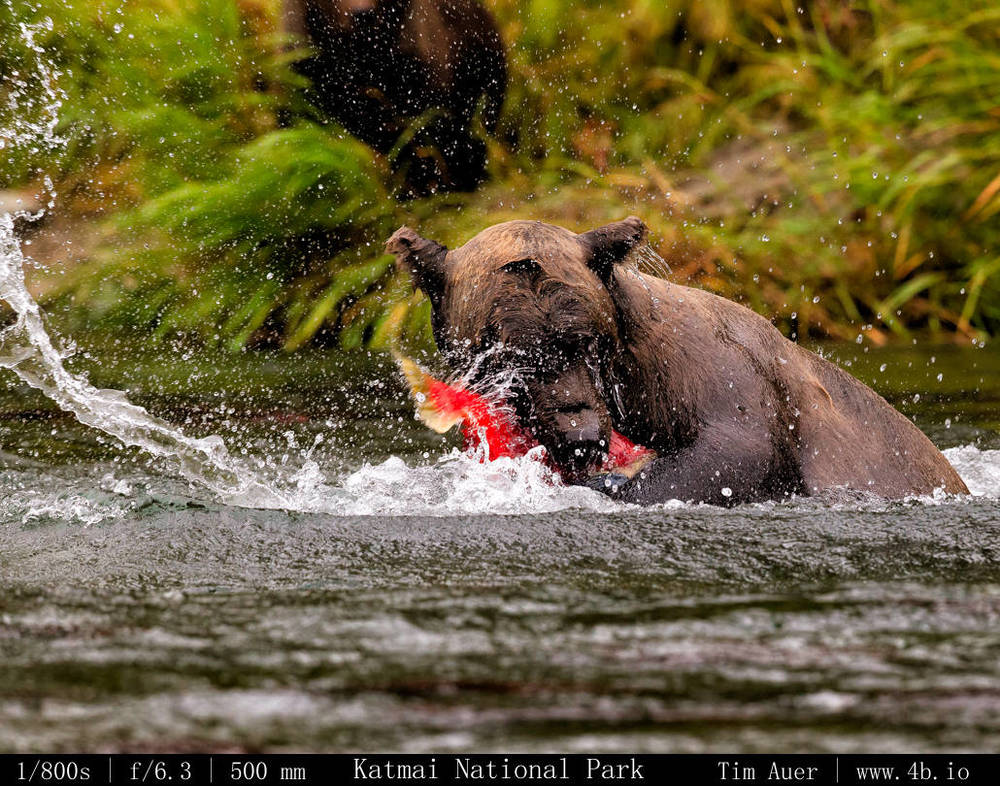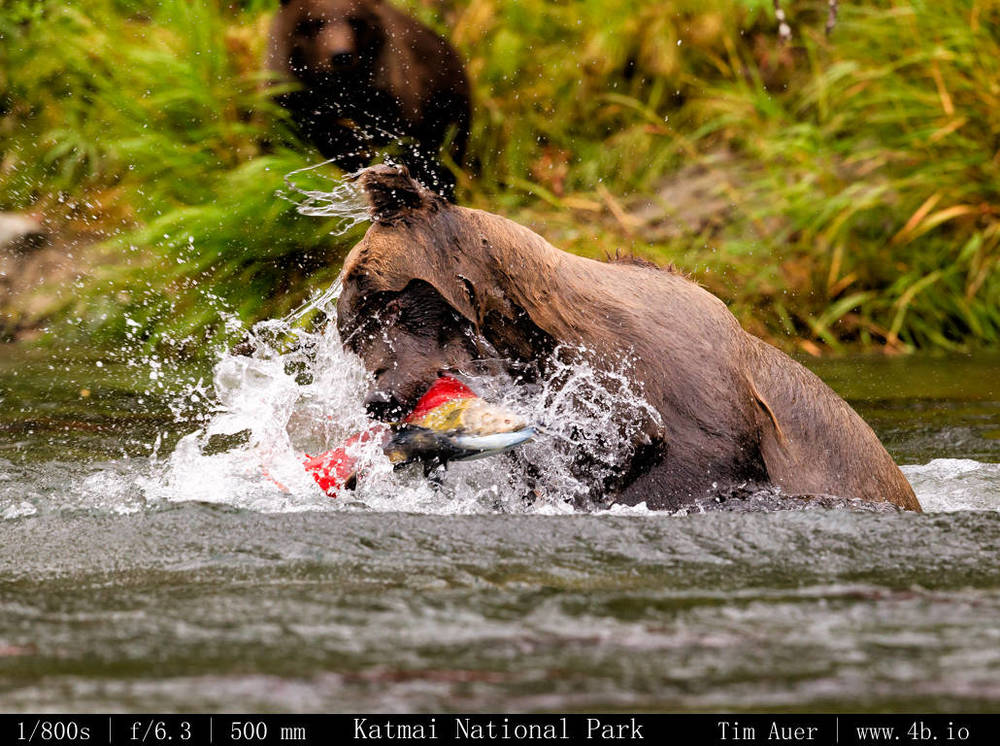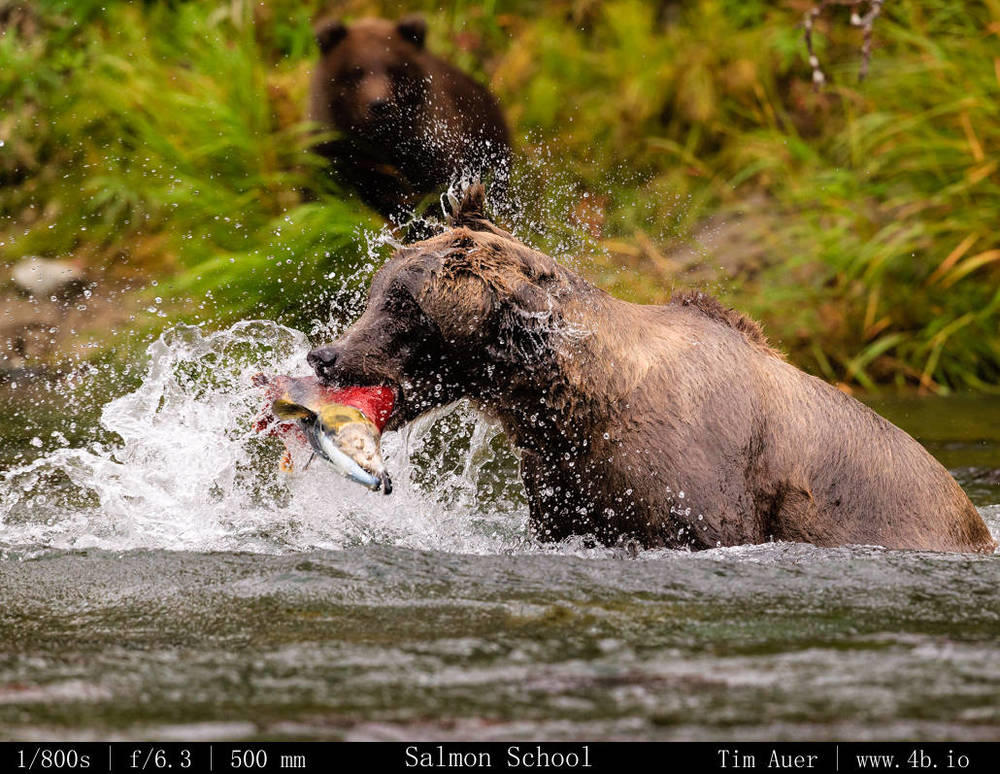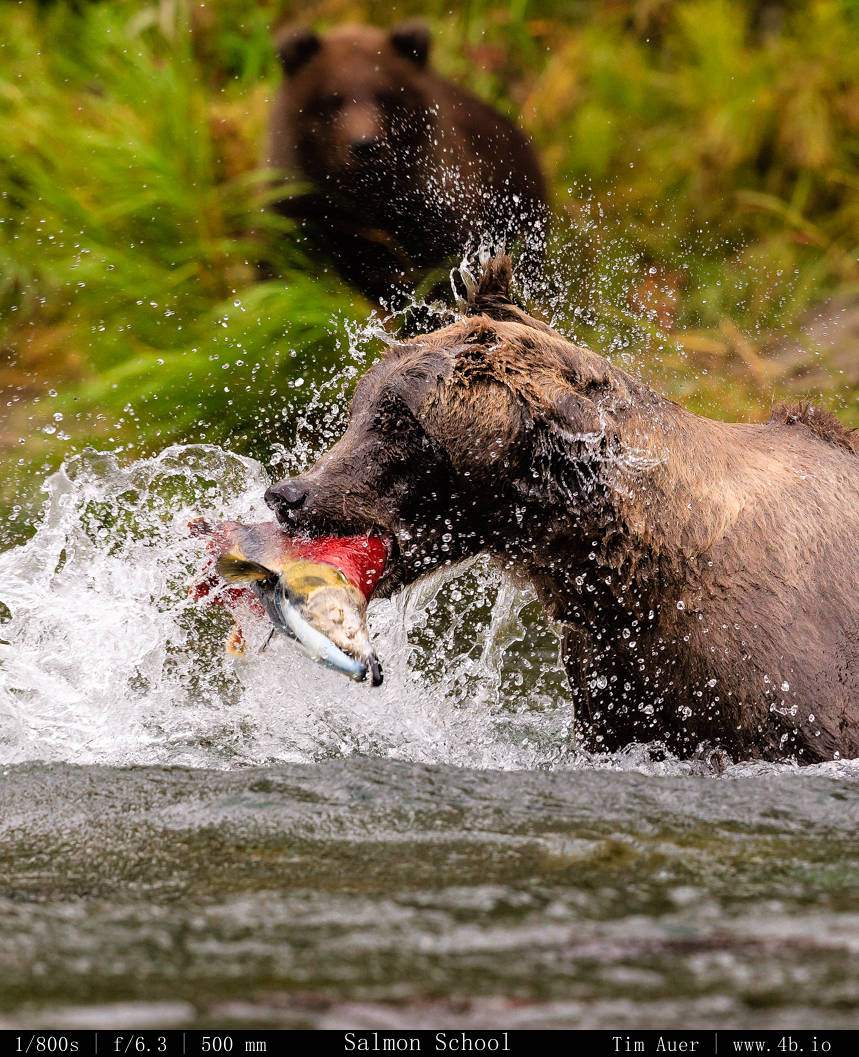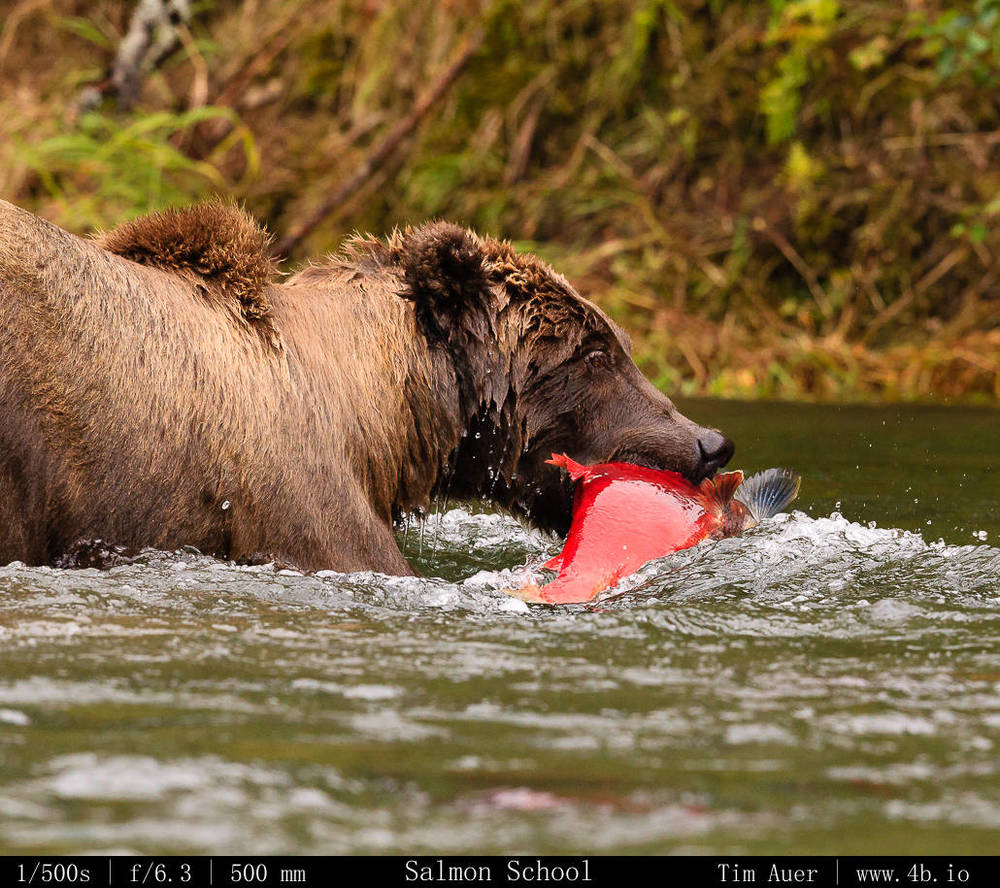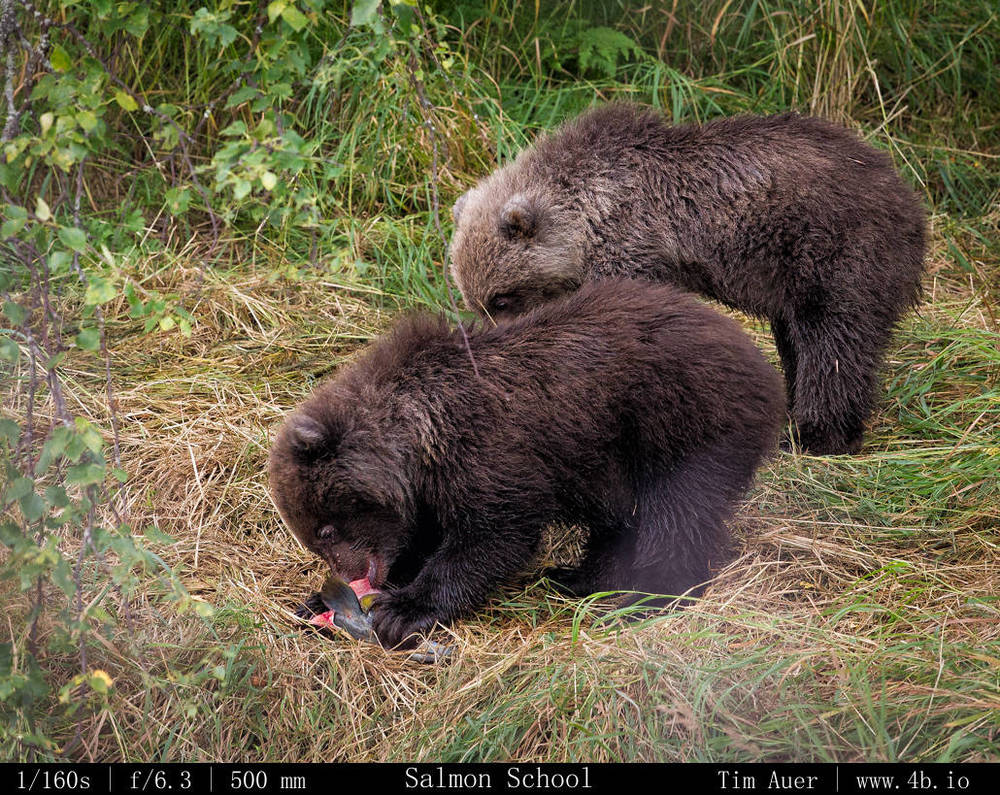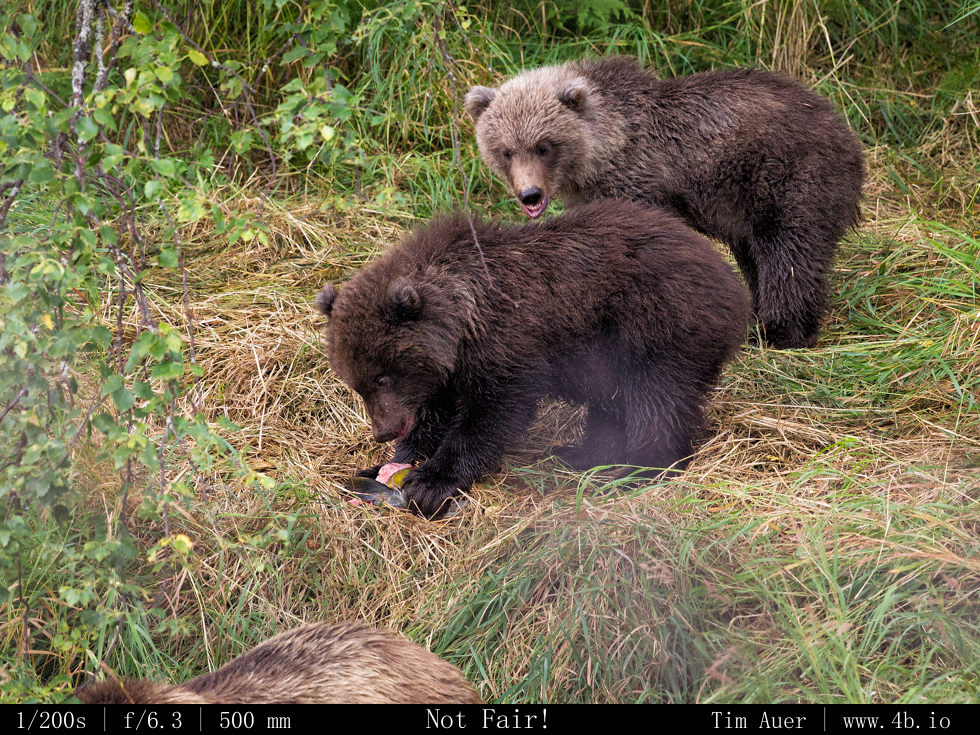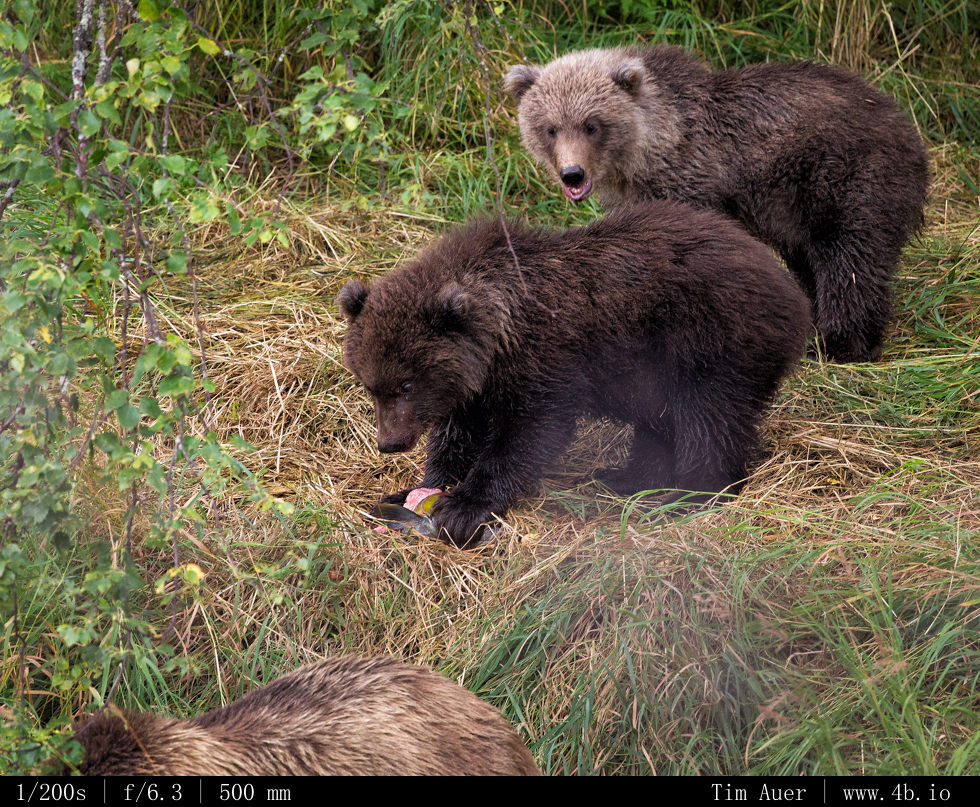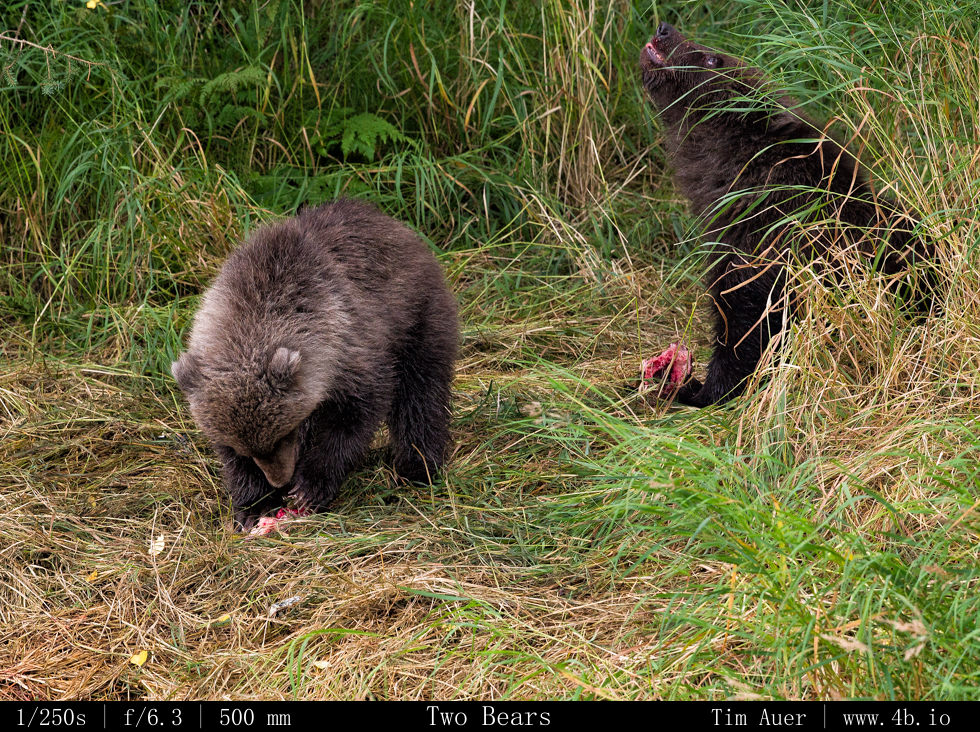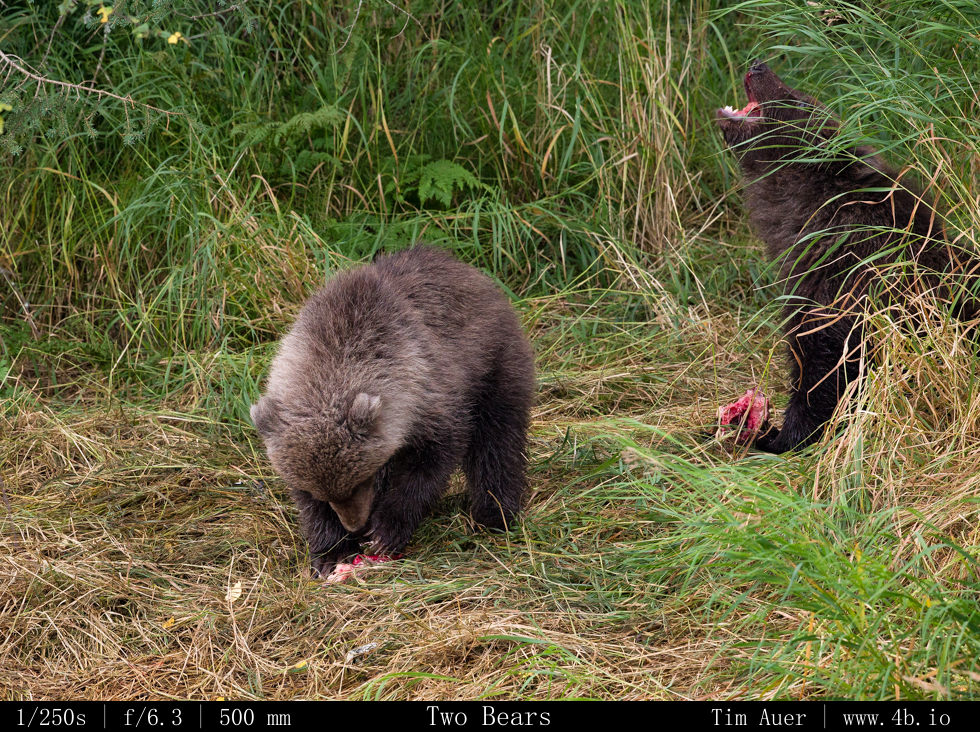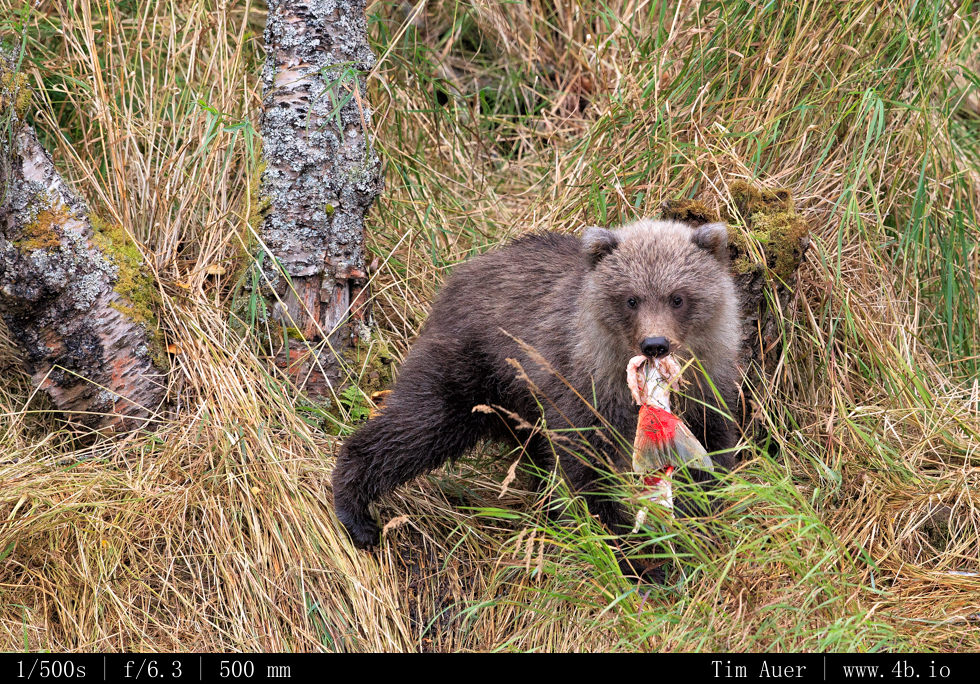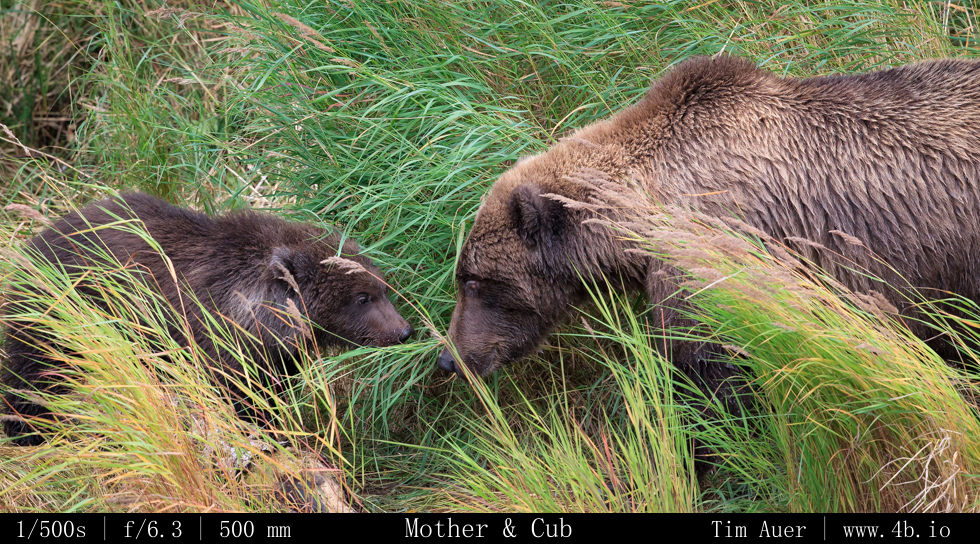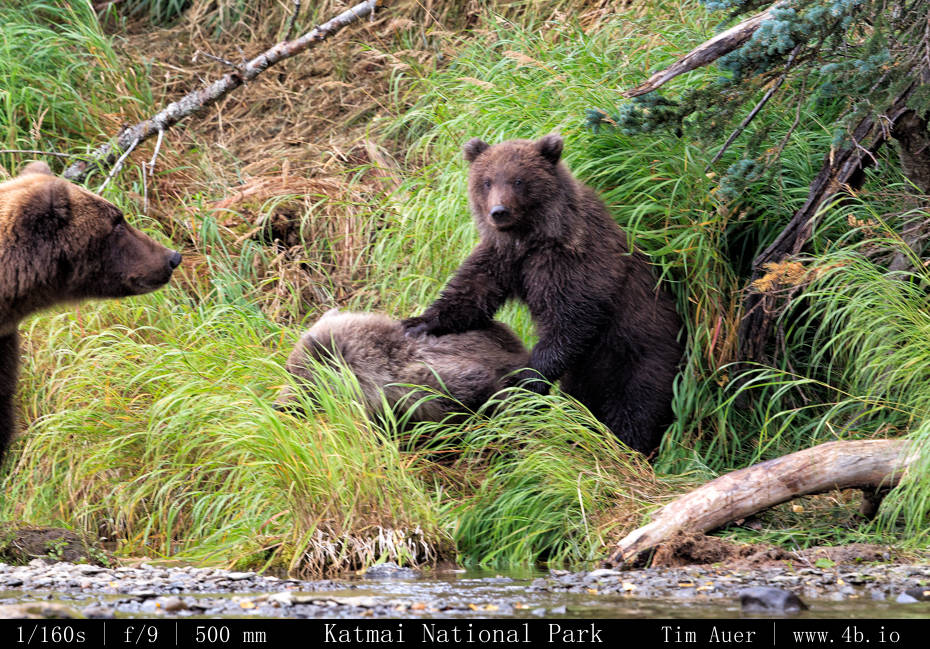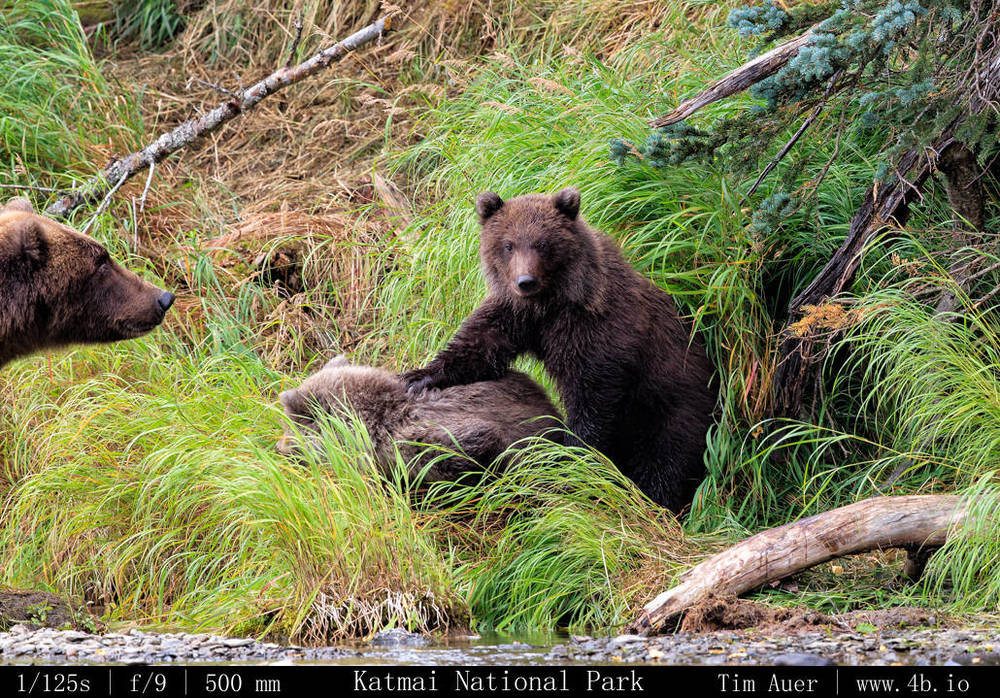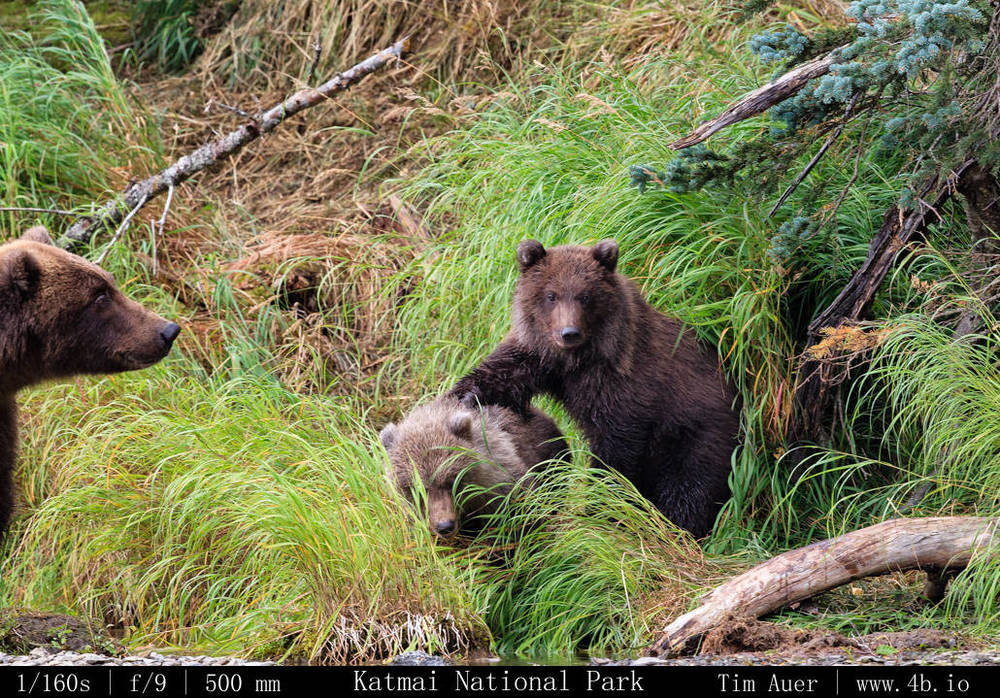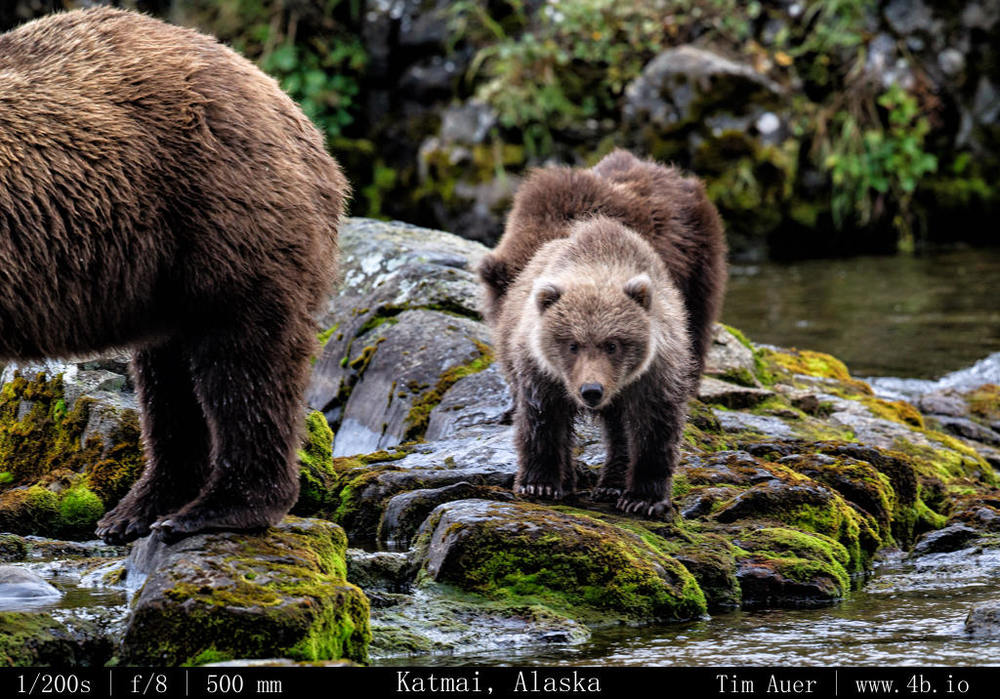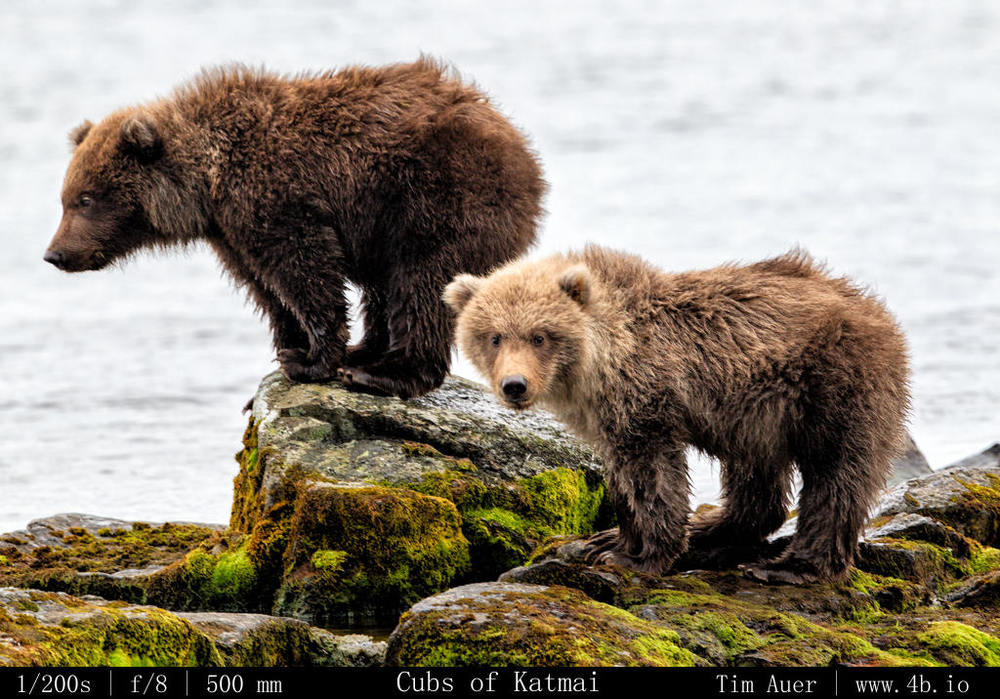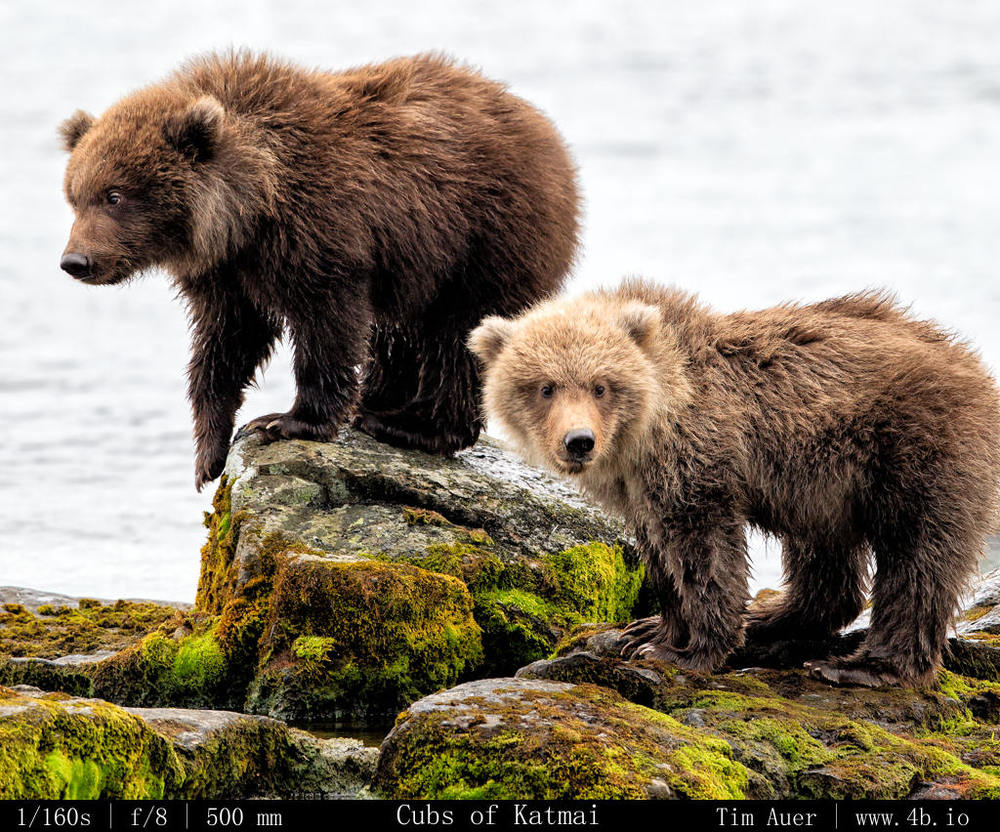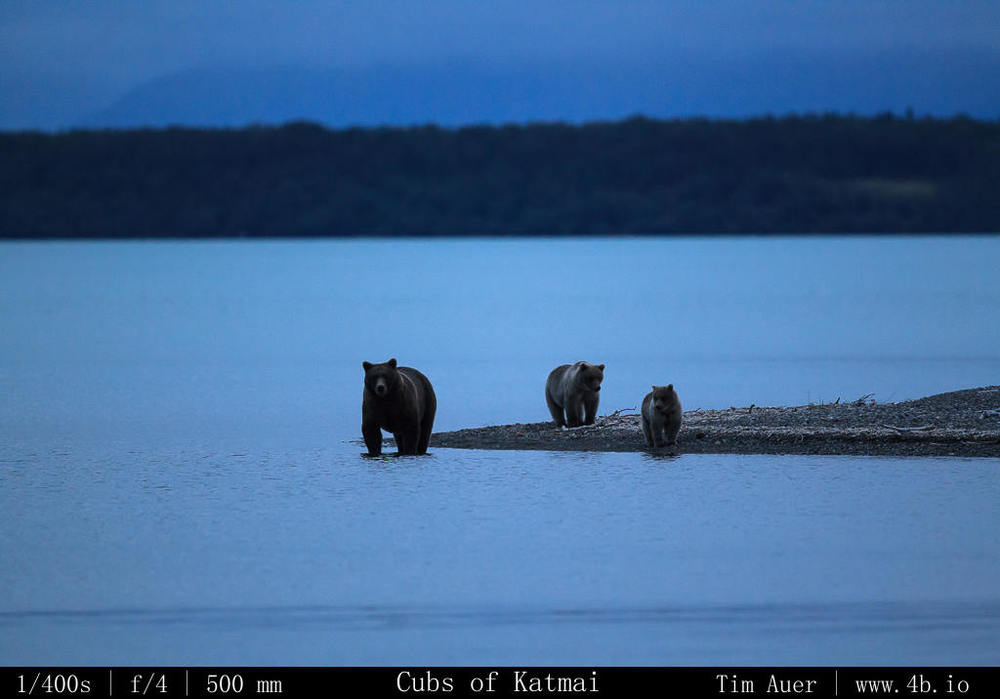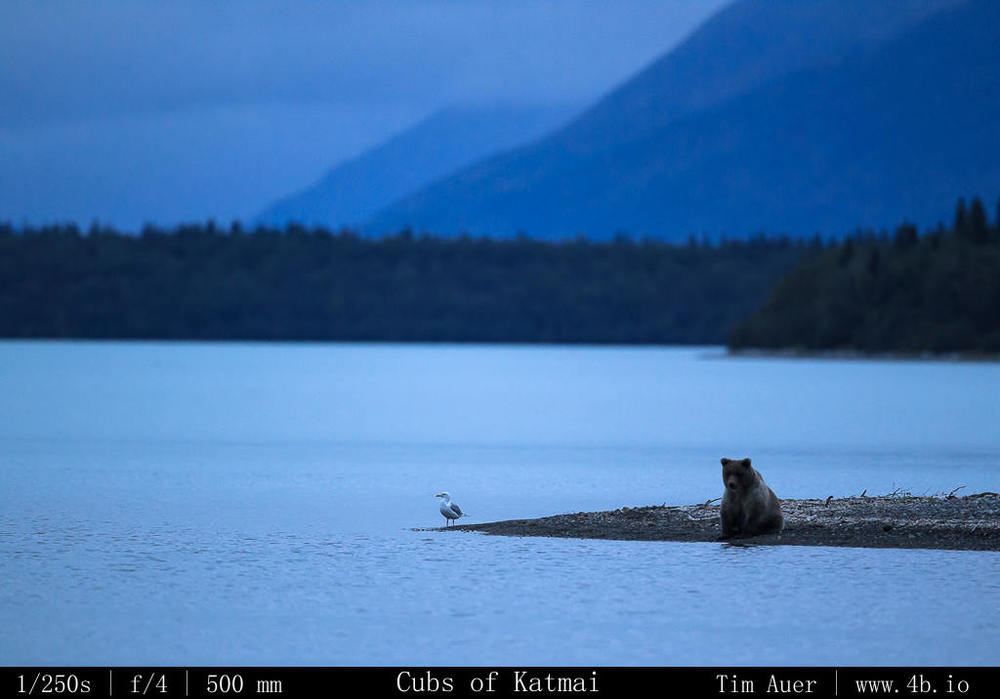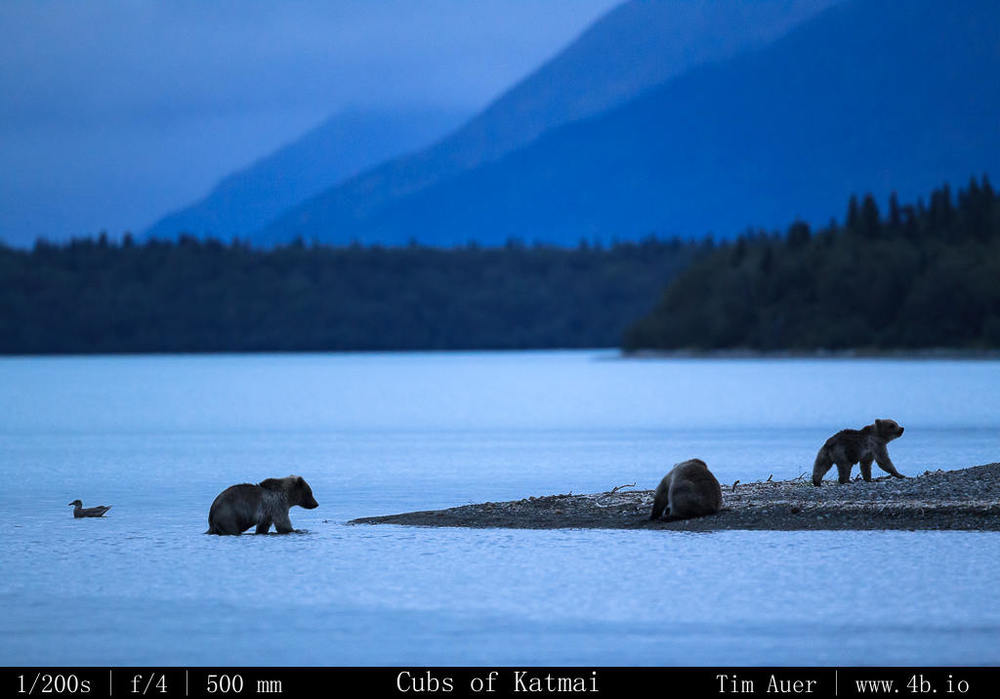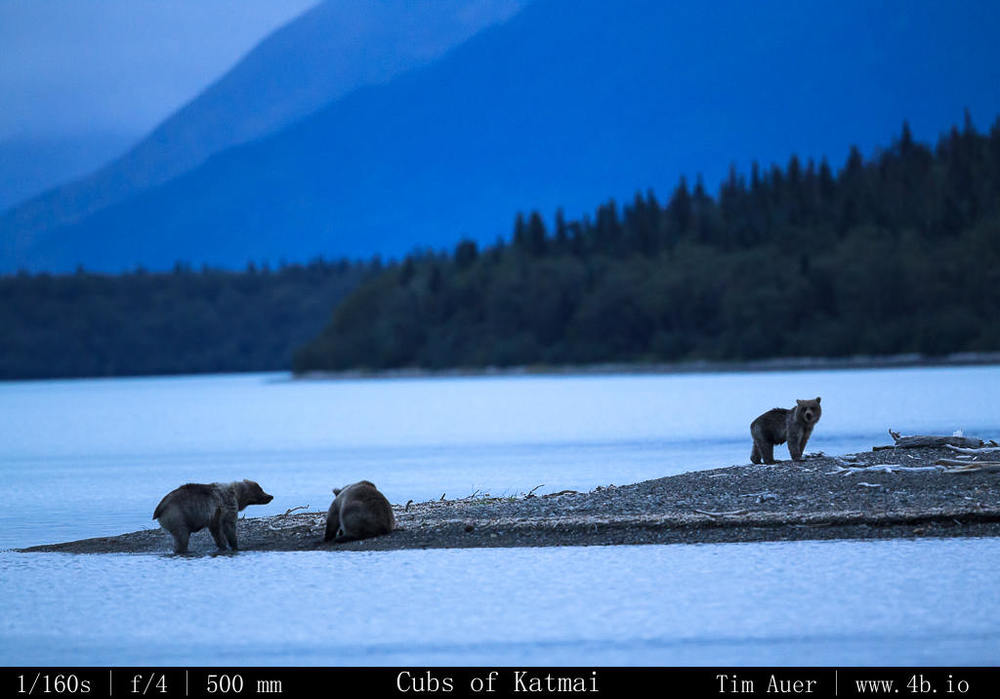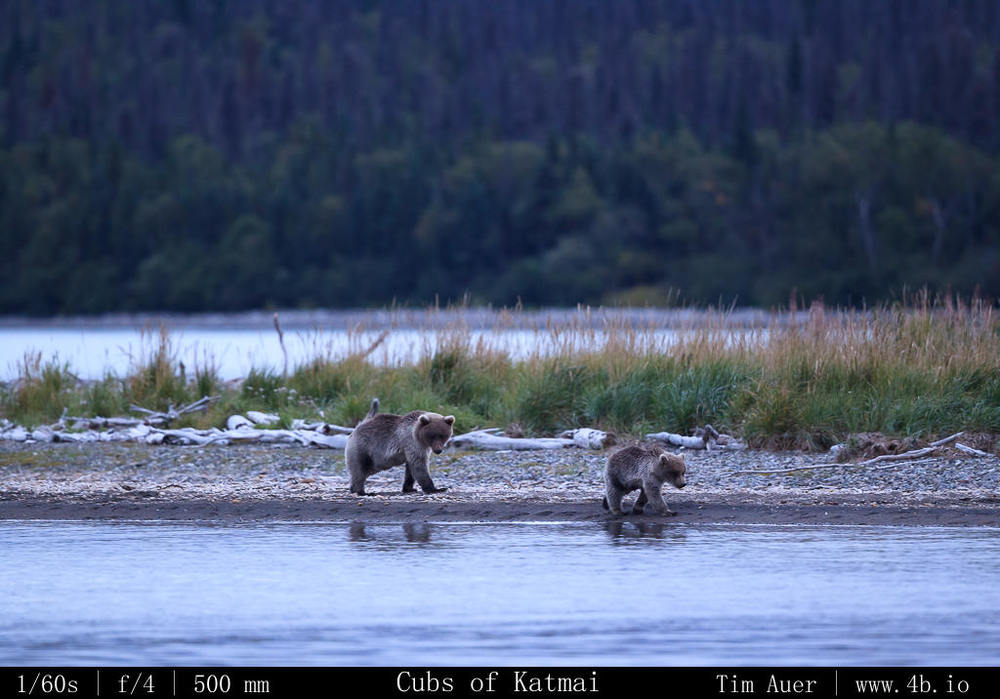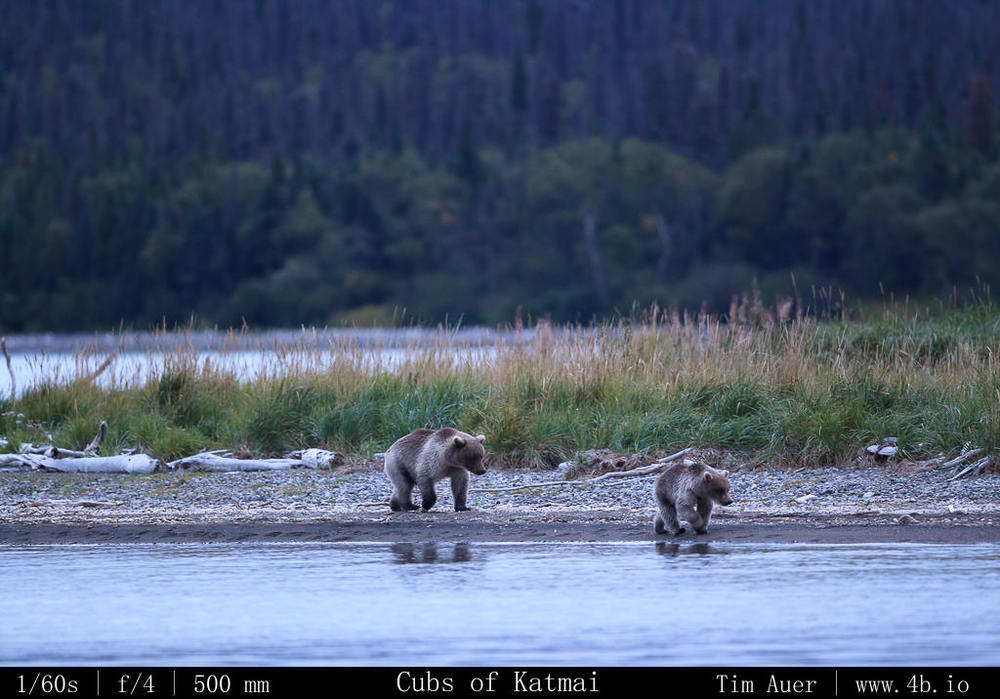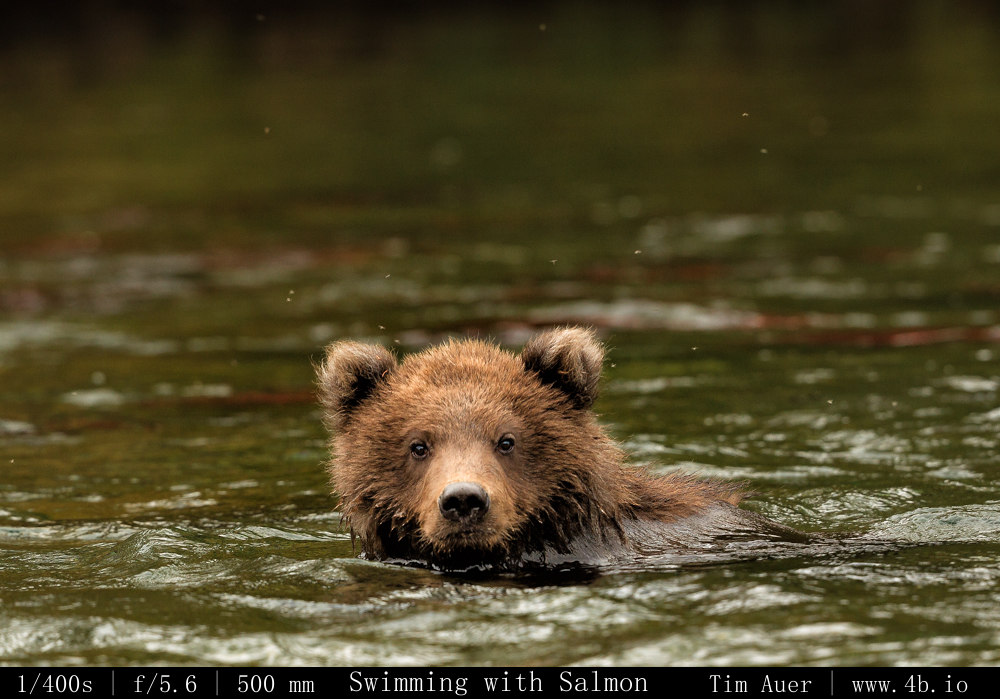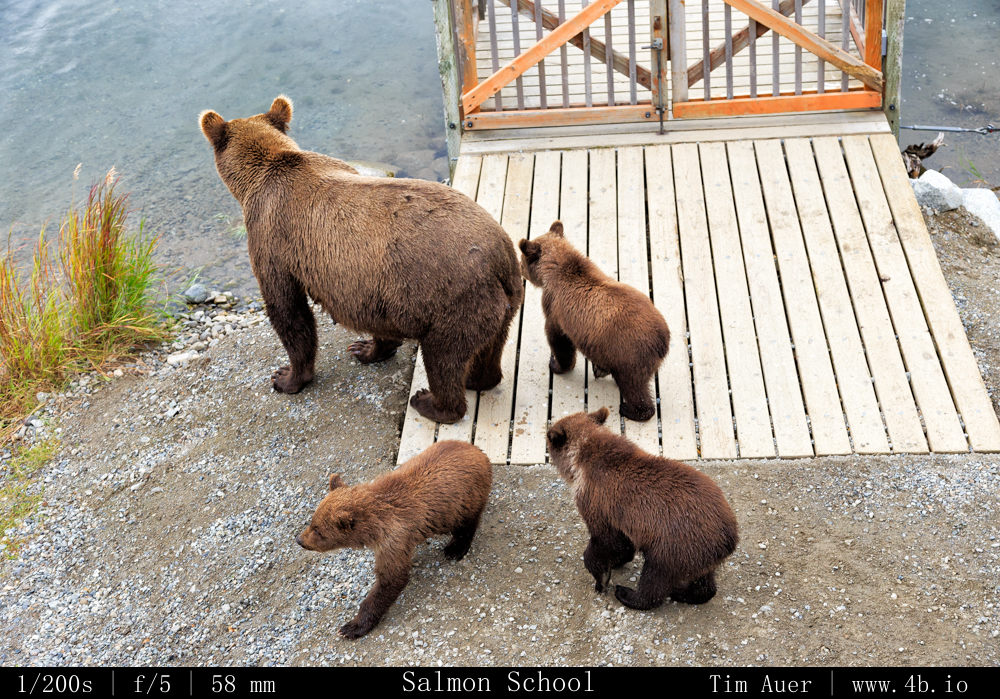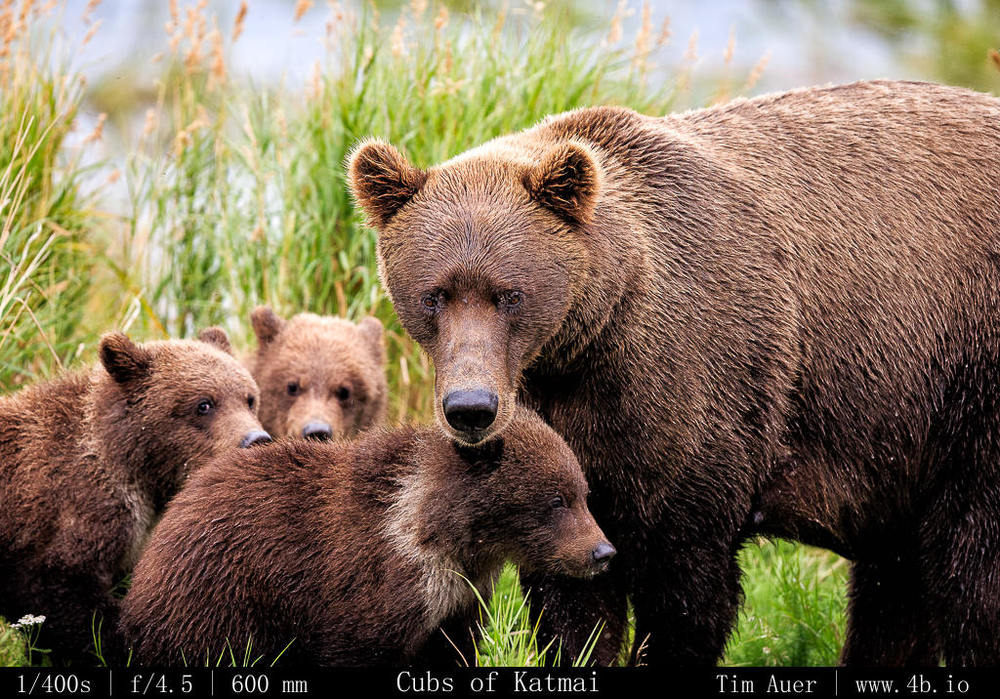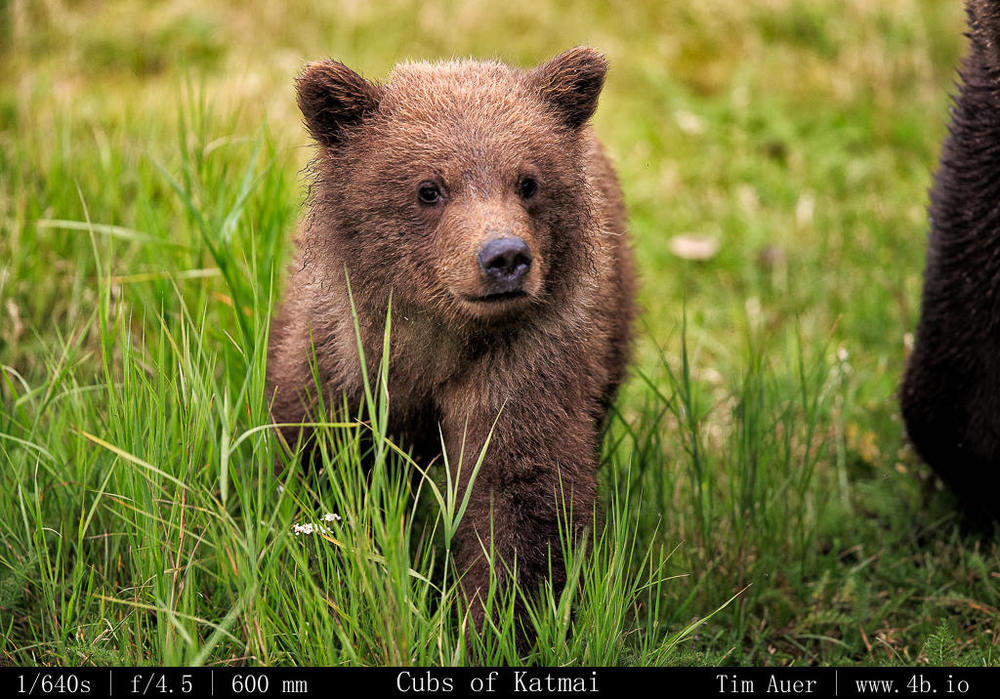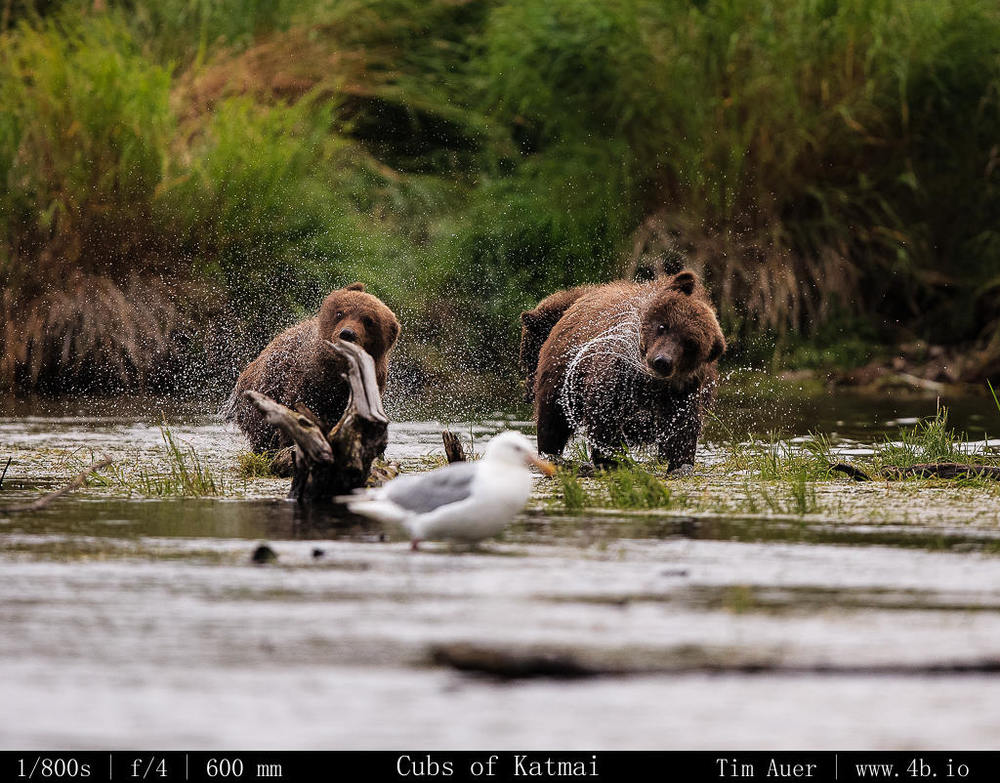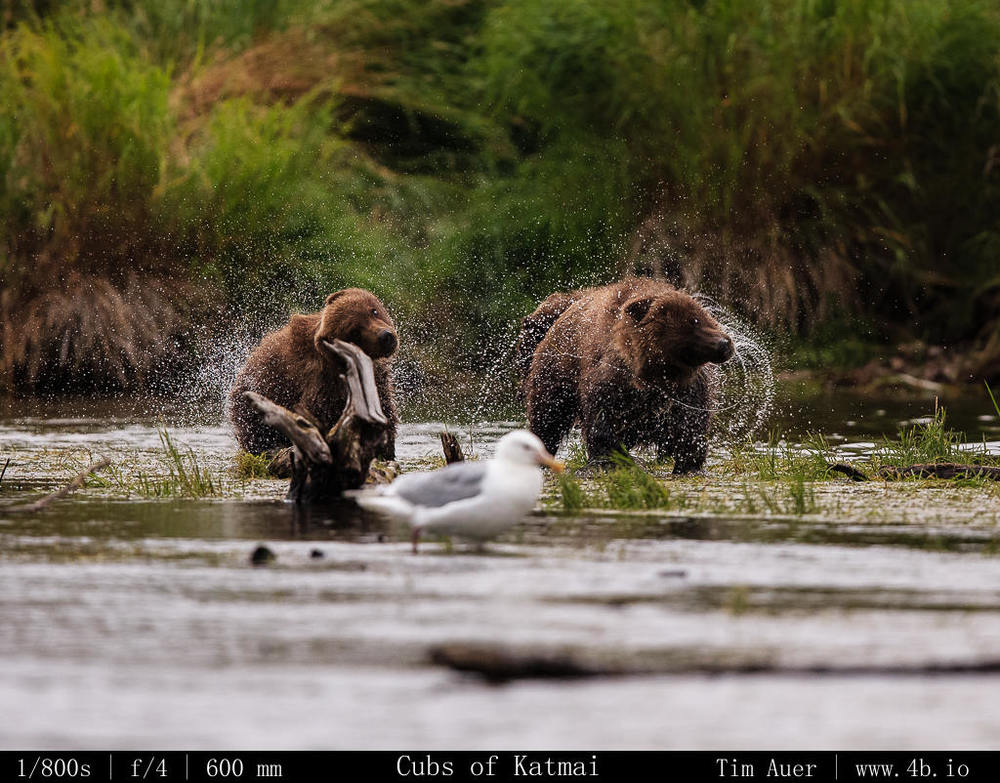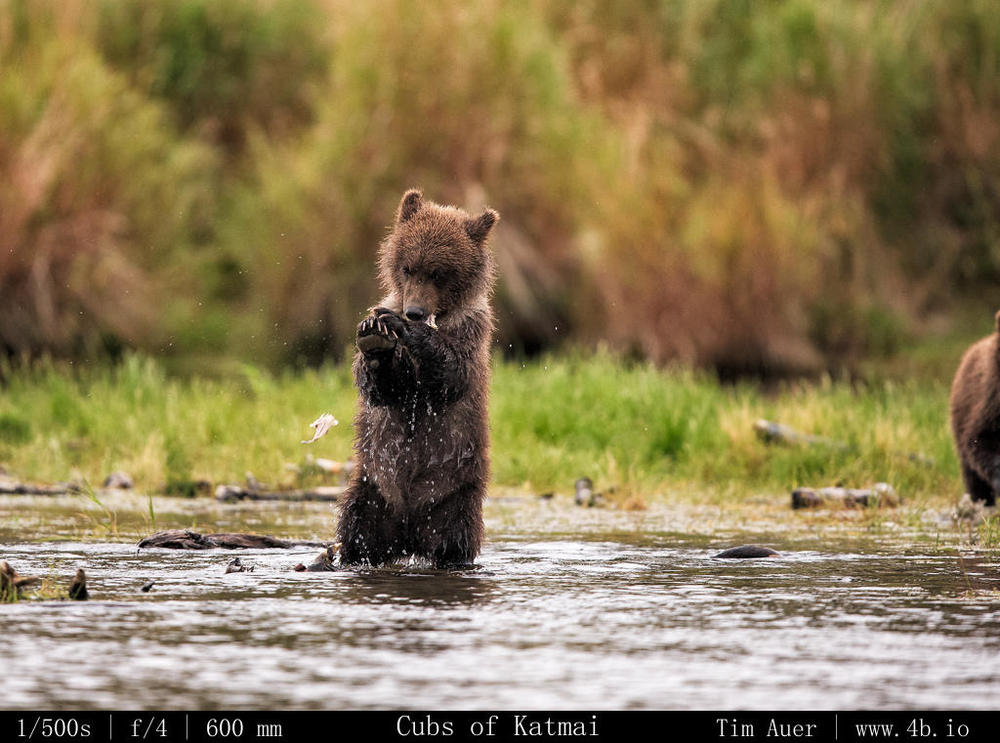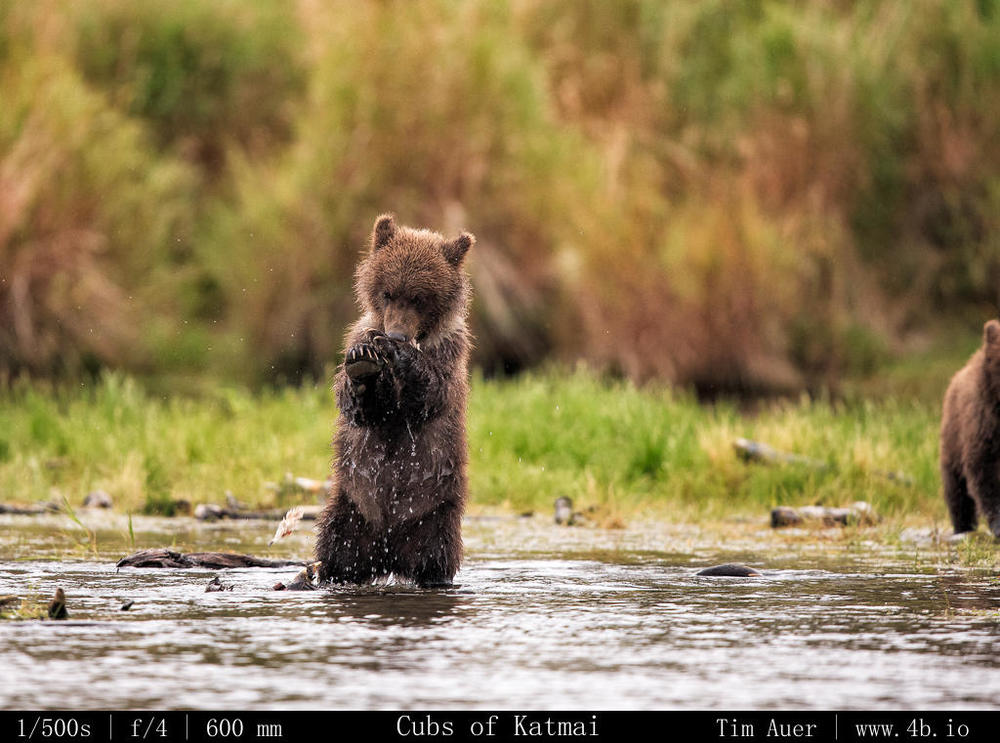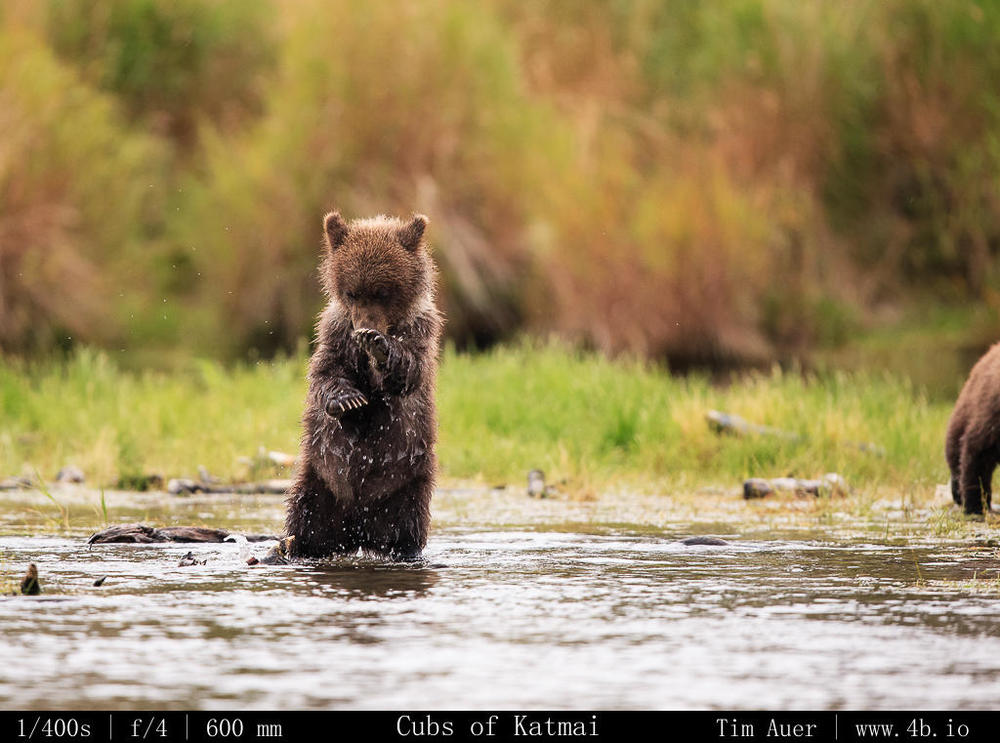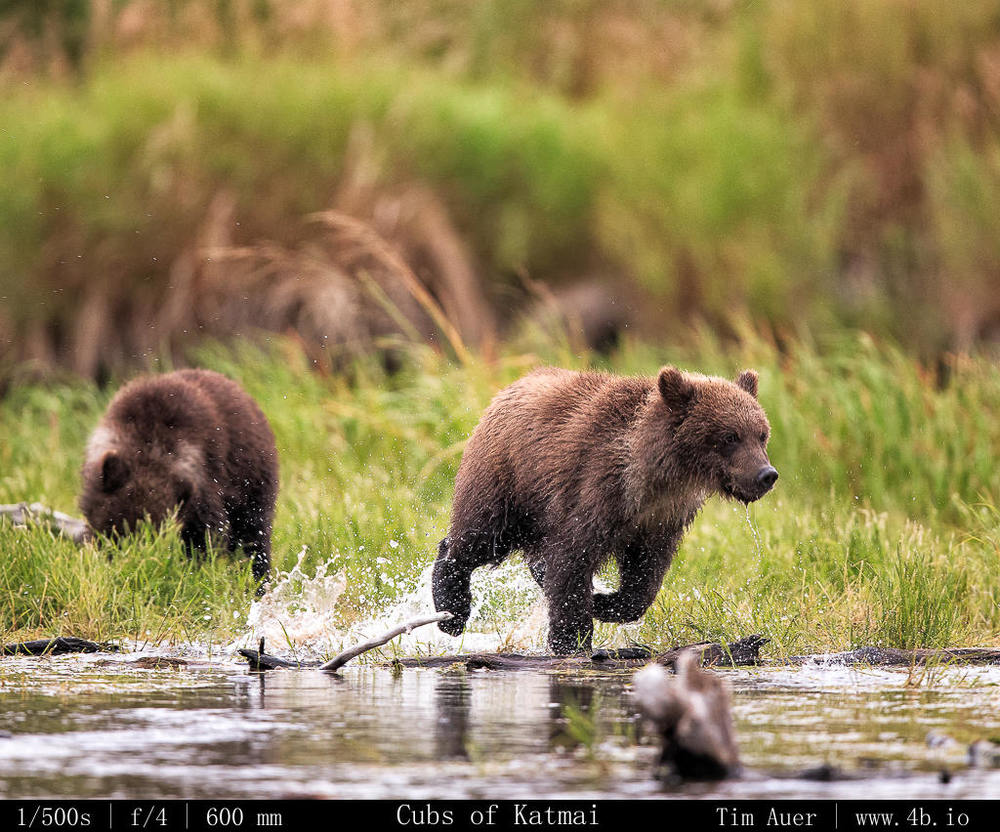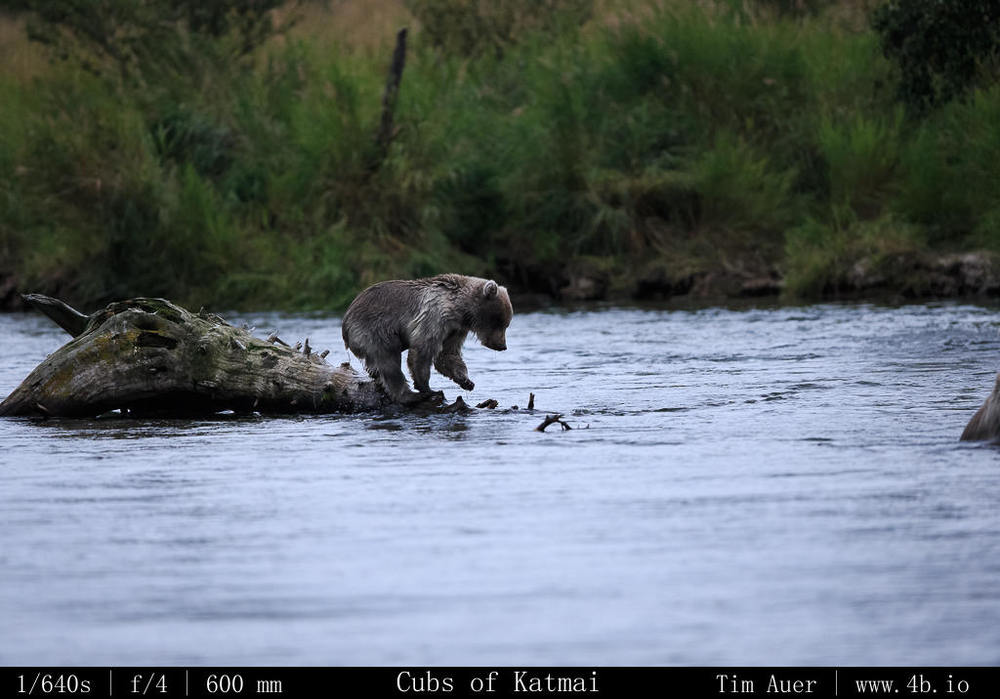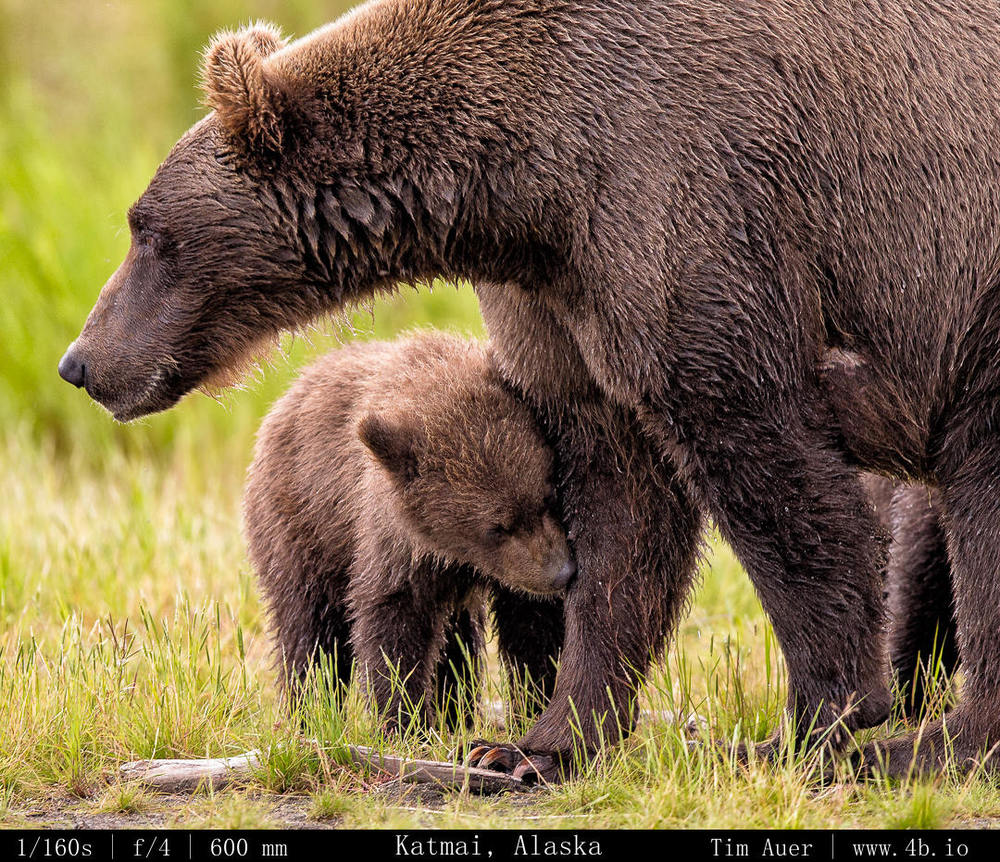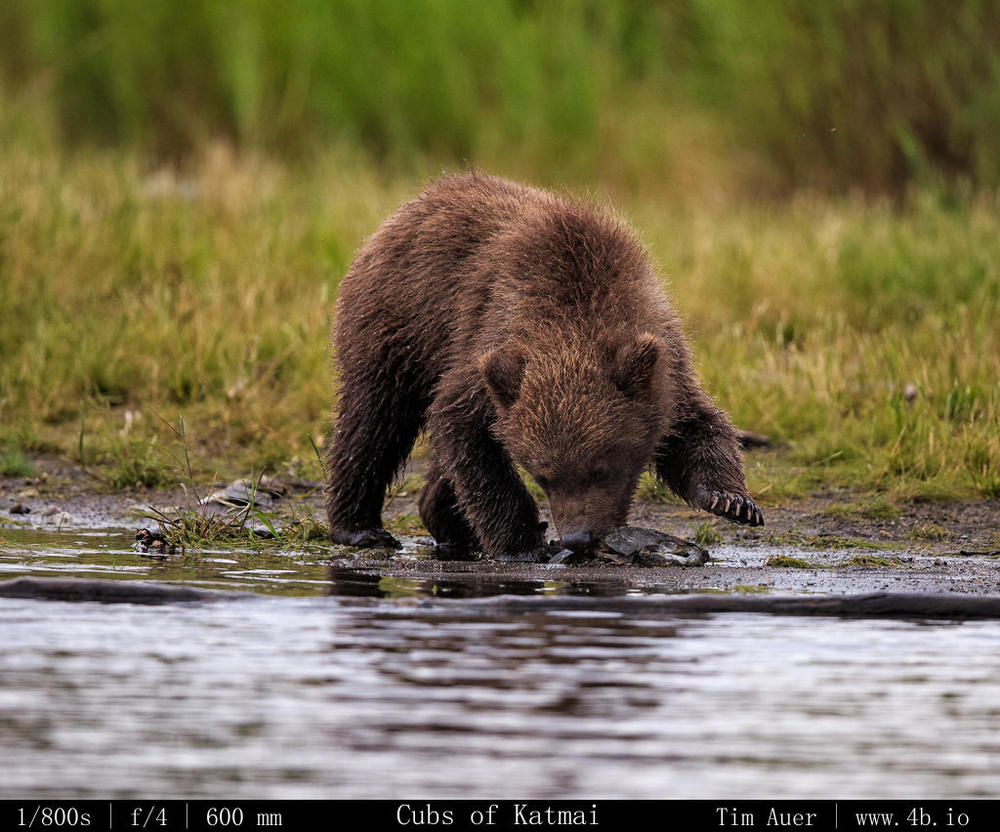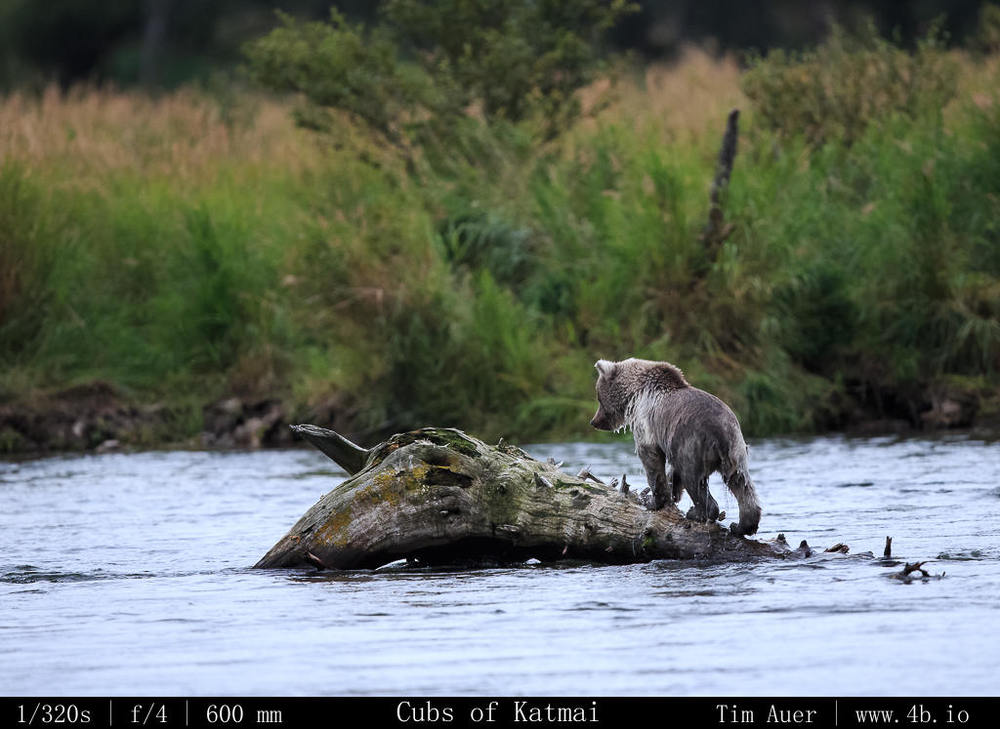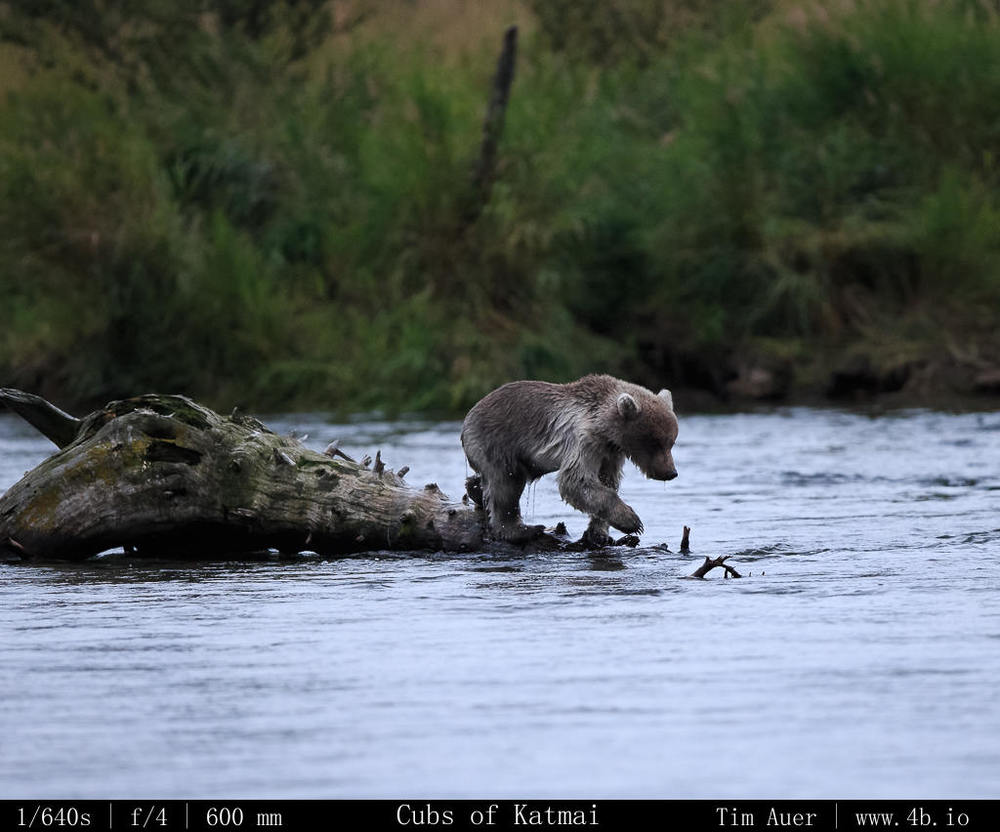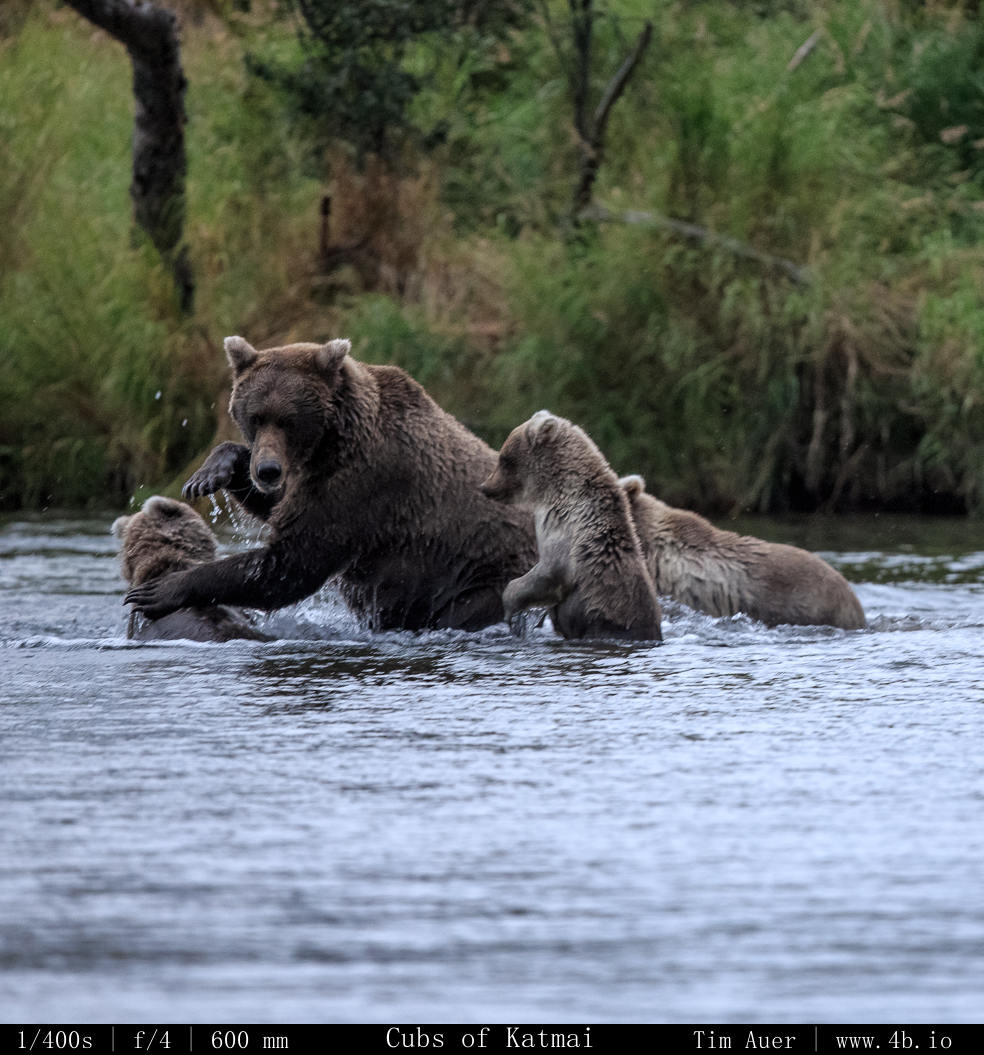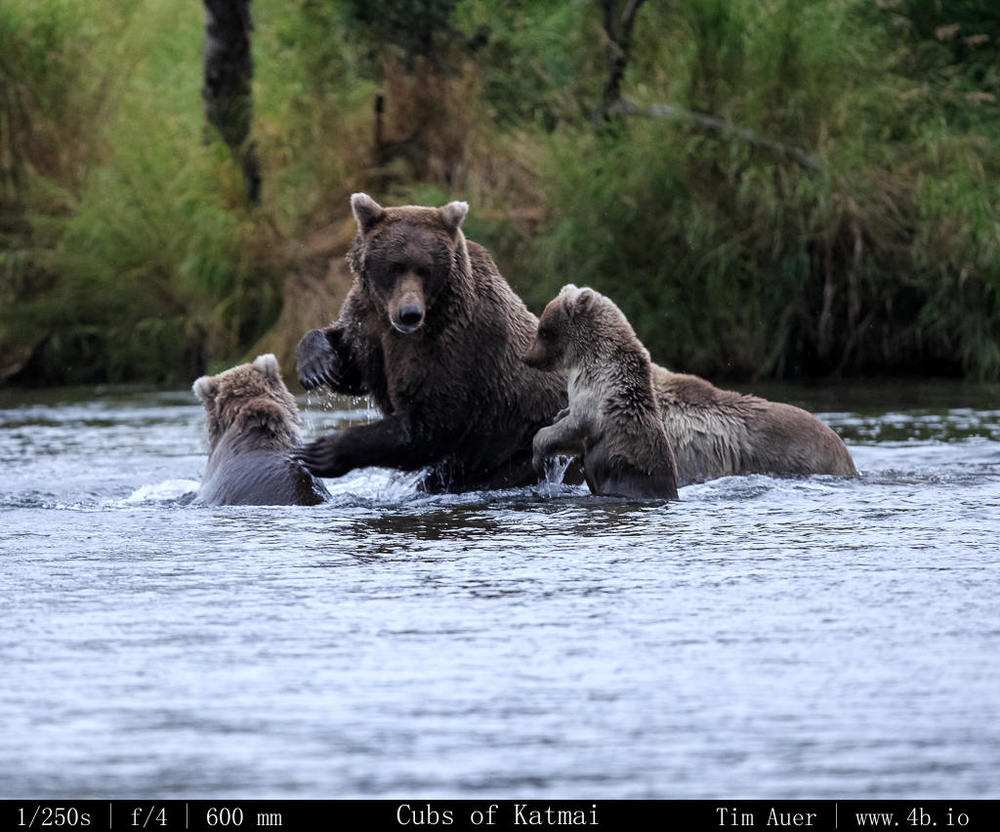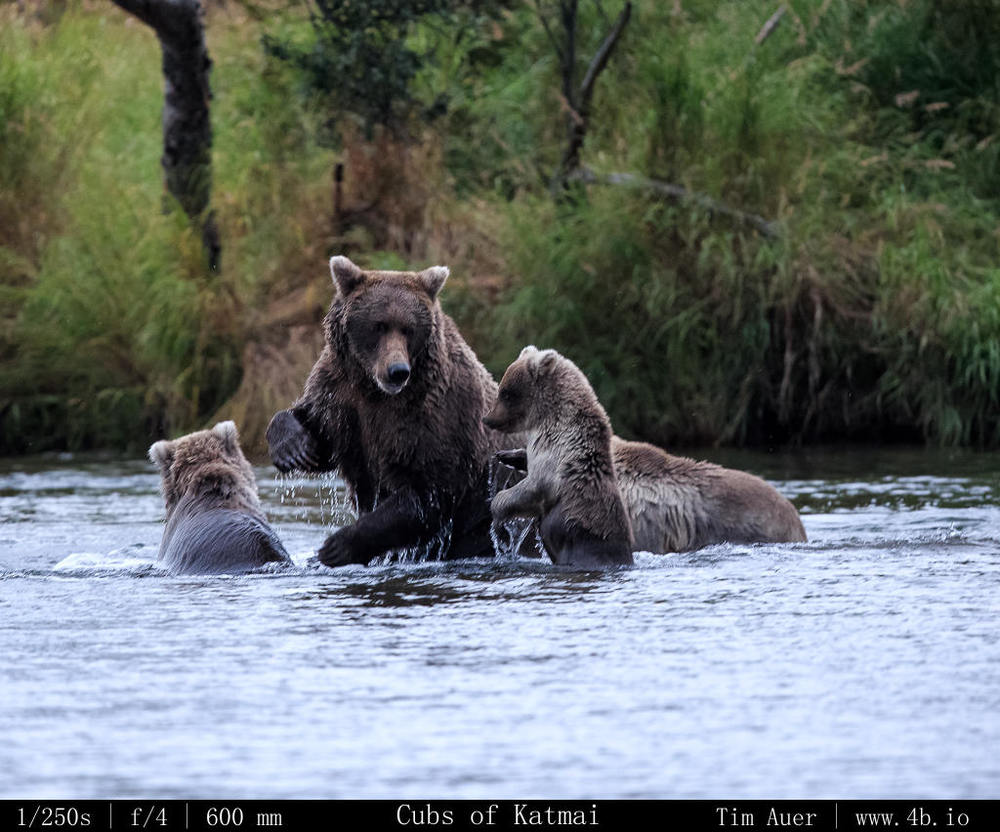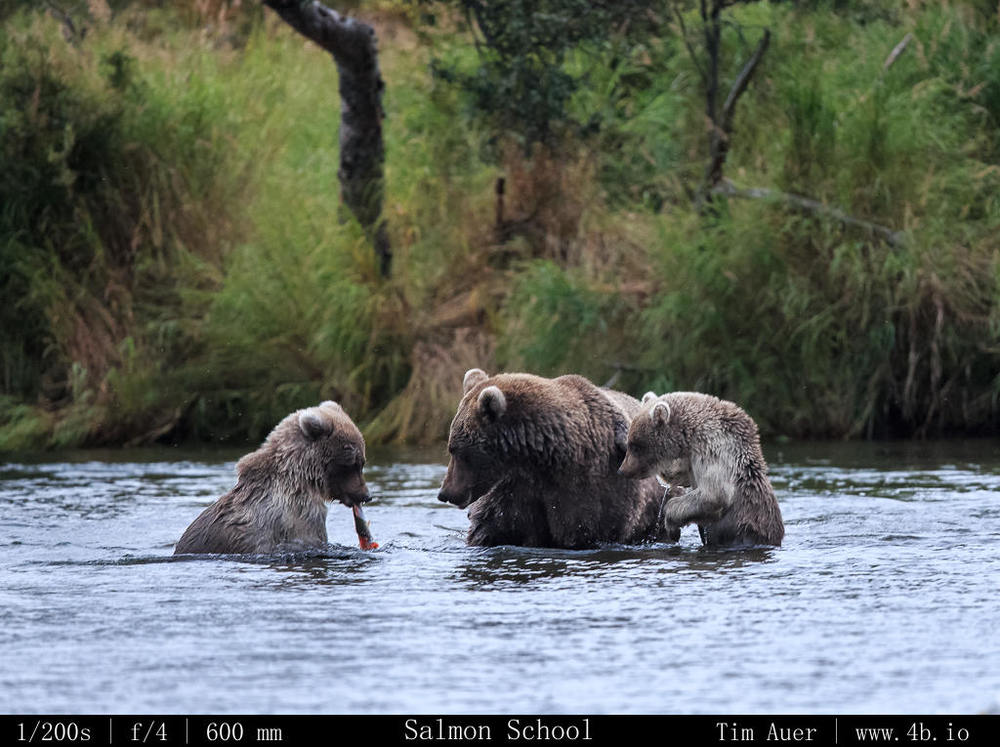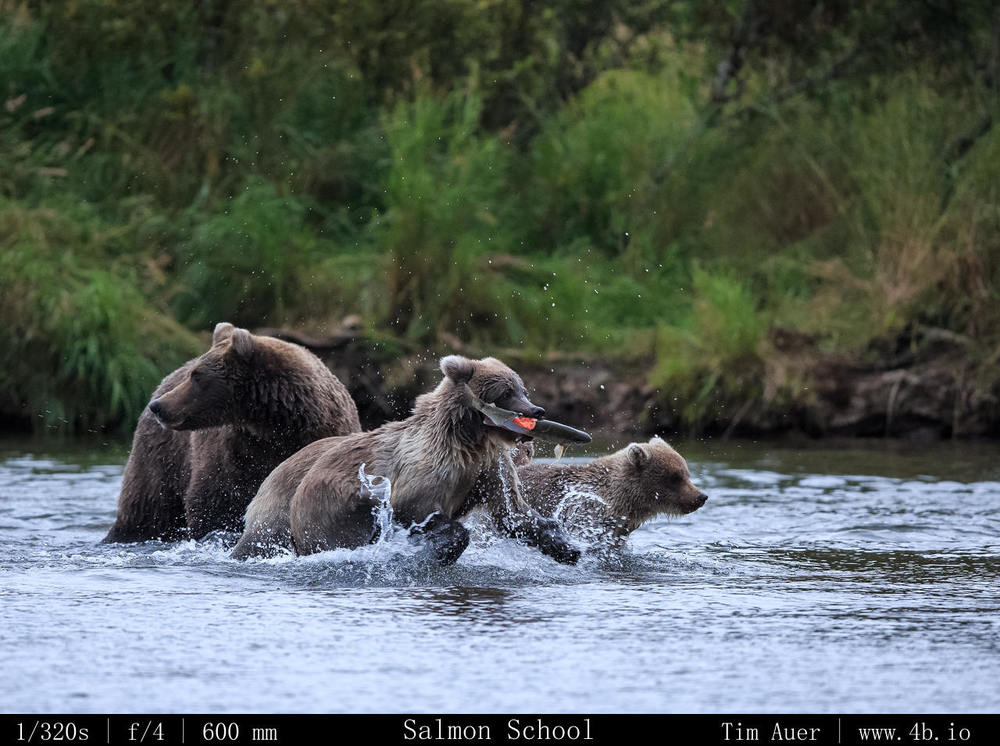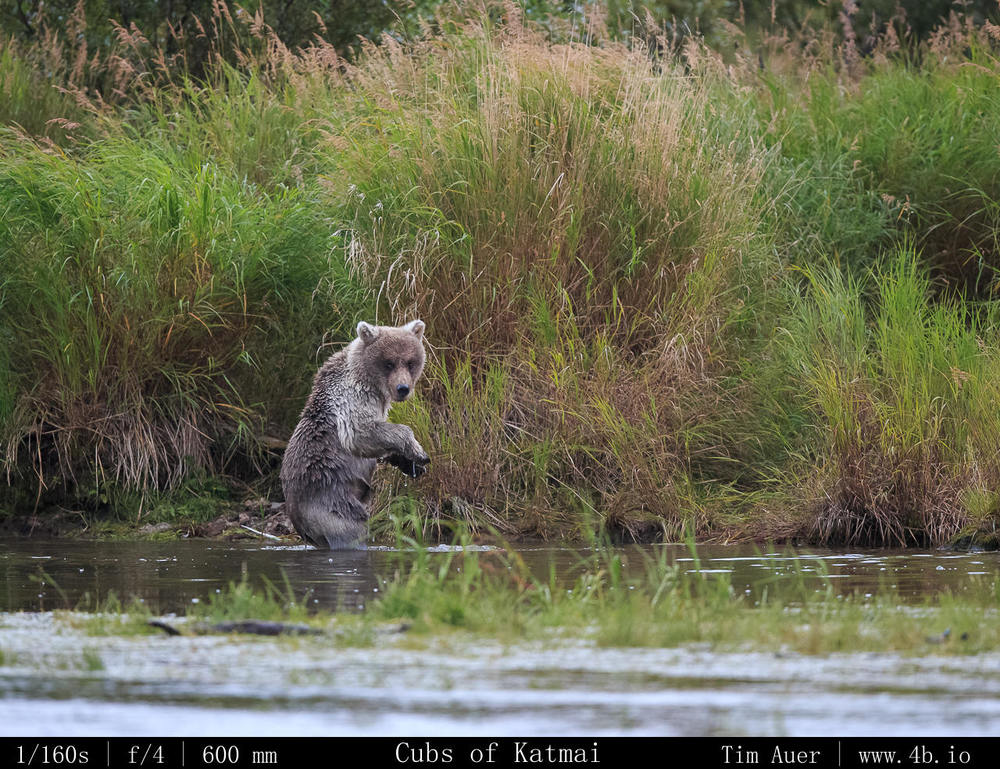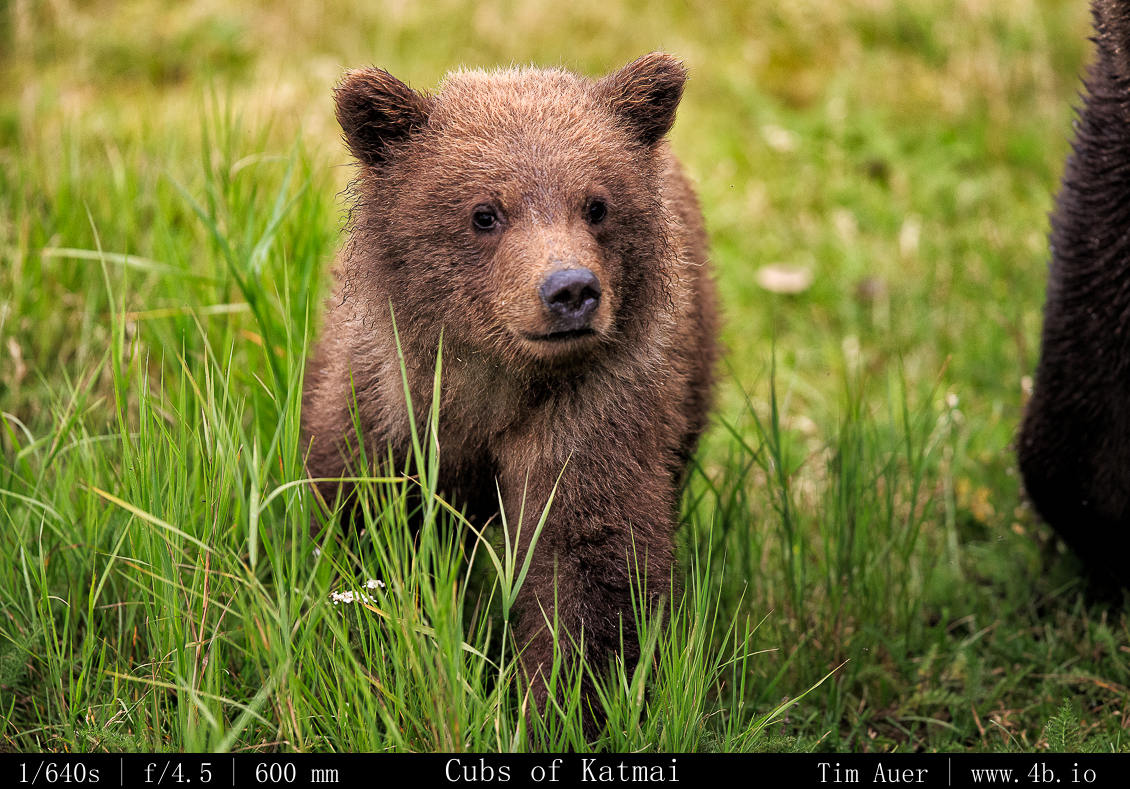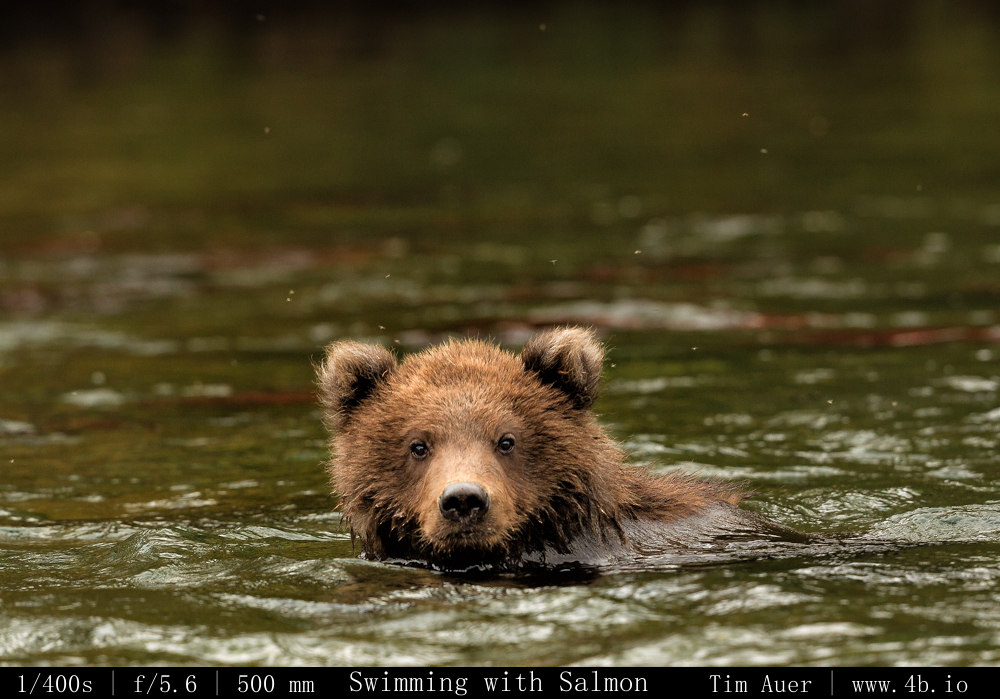
The post everyone has been waiting for…..the cubs of Katmai National Park! If you don’t find bear cubs adorable, you are probably a bad person, or an adult male bear that is trying to mate.
This post’s gallery contains an unusually large number of images. I did this intentionally to give an idea of what the bear cub experience is like at Brooks Camp. Other posts will not contain 100 photos.
Katmai: Bear Behavior
Katmai: Float Plane Lift
Katmai: Cubs
Katmai Packing List
Katmai: Otis Eats a Salmon

The first night was surprisingly calm and the surface of Naknek Lake was glass in the evening’s twilight. By midnight, as we sat around the fire, it became apparent a front was moving in. The air was still and quiet, but waves began to slap the shore of the lake, like the wake of a distant ship. It wasn’t until after 02:00 that the trees began to rustle in the campground. The front’s arrival indicated two things: cold and wet conditions for the start of the second day in Katmai National Park.

Fortunately the driving rain began to taper at sunrise, and when I emerged from my tent it was only a steady shower. Nothing that my Helly Hansen slicker couldn’t handle. More importantly, the weather improved drastically throughout the day. By 13:00, the rain had stopped and it was no longer cold. Most of this day was spent becoming acquainted with the bear families of the Brooks River. This was done at the lower river platform and at the head of the Brooks River, near Brooks Lake.
Definition
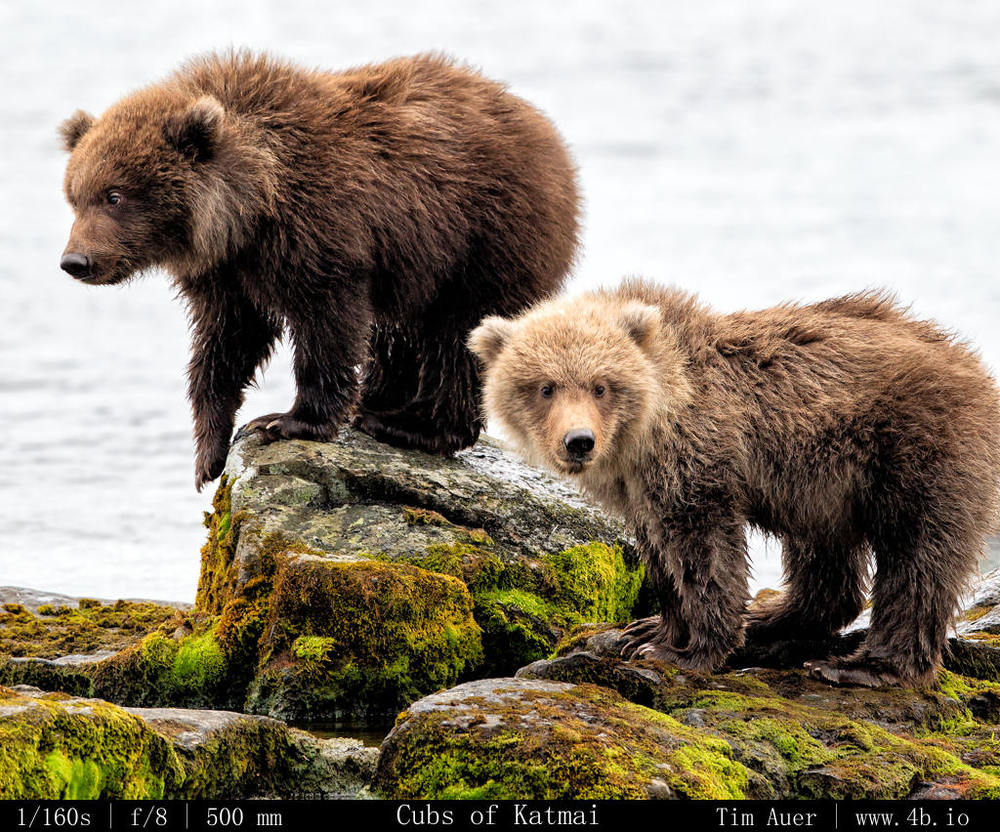
Bear Jam: A bear jam is when the bridge over the Brooks River is temporarily closed due to a bear being too close to the bridge structure. It can be on land (as shown) or in the water (as shown). Bear jams are quite common, especially if a family is fishing near the mouth of the river. Bears have been known to take naps near the bridge and keep it closed for over an hour. This isn’t usually a problem unless you have somewhere urgent to be, which is rarely the case at Brooks Camp (the only thing to do here is look at bears). Although in some cases, a bear jam occurs when you need to get back to camp to catch your plane to King Salmon. This is not a valid excuse to veto the ranger’s bear jam ruling, and you will either miss your flight, or potentially delay it…significantly (this is when it becomes inconvenient).
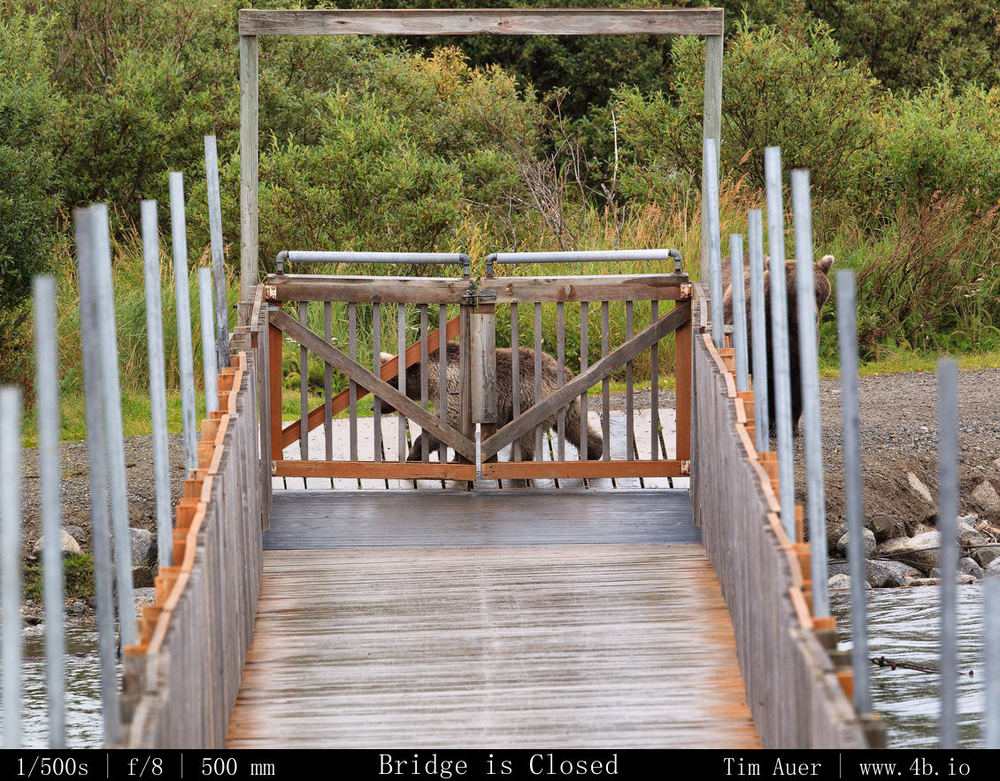


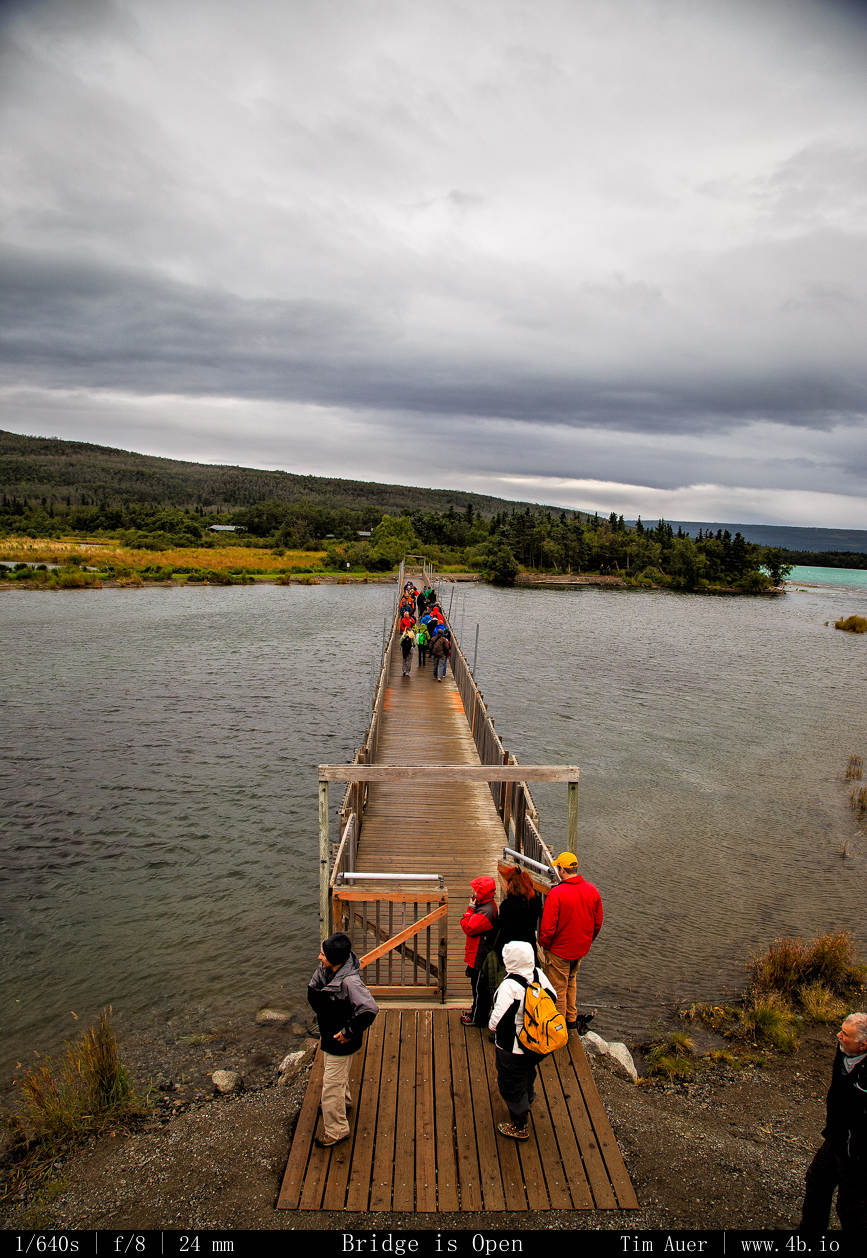
Bear Families
Despite the attentive care of sows, only about one out of three cubs will survive their first year.
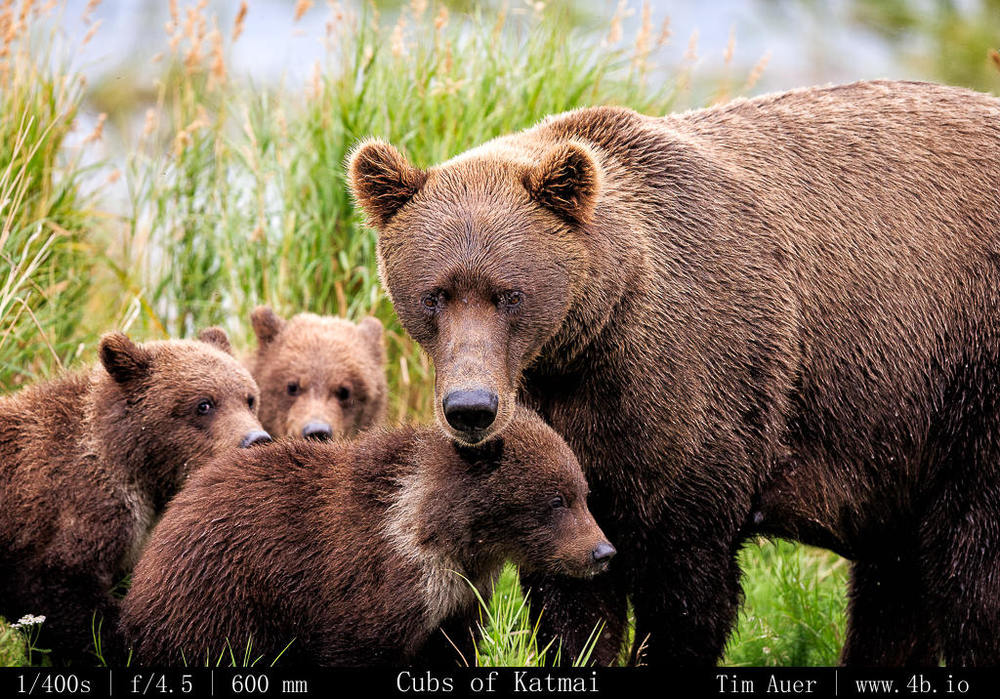
During the course of the trip, we were able to meet four different bear families. Two with three cubs, one with two cubs, and one with a single cub. It was interesting to watch how the different sows handled mothering their cubs. One took a hands on approach with her little ones, never straying very far. While another would leave her cubs playing on a beach, while she would fish 400m away up river. The spring cubs clung together and never strayed far, but the yearlings displayed their ambition by venturing further, eventually crying for mom when they got too far.
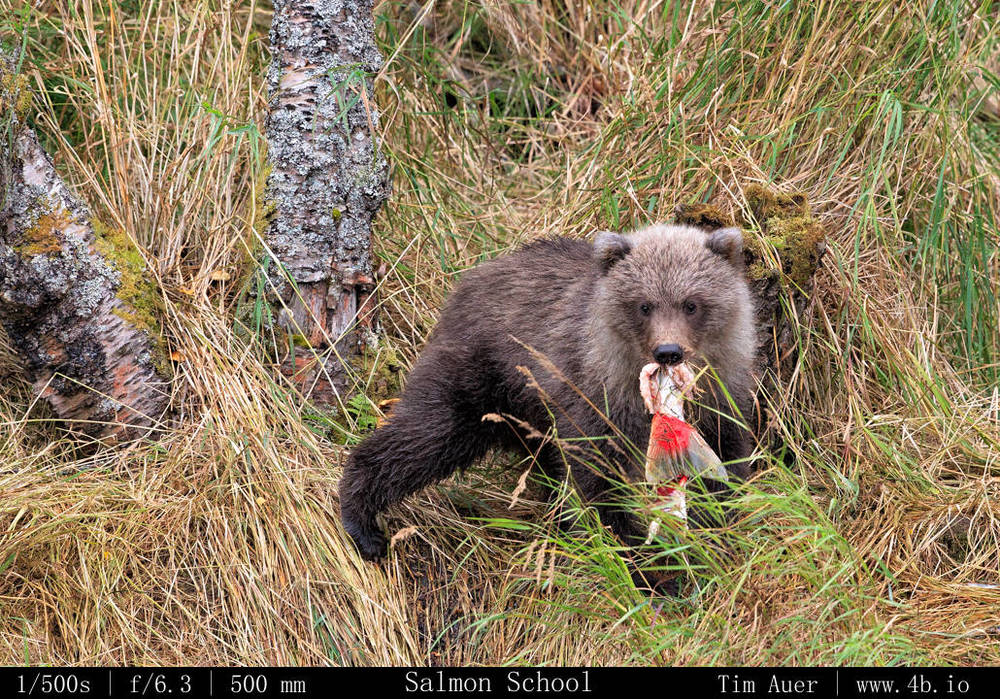
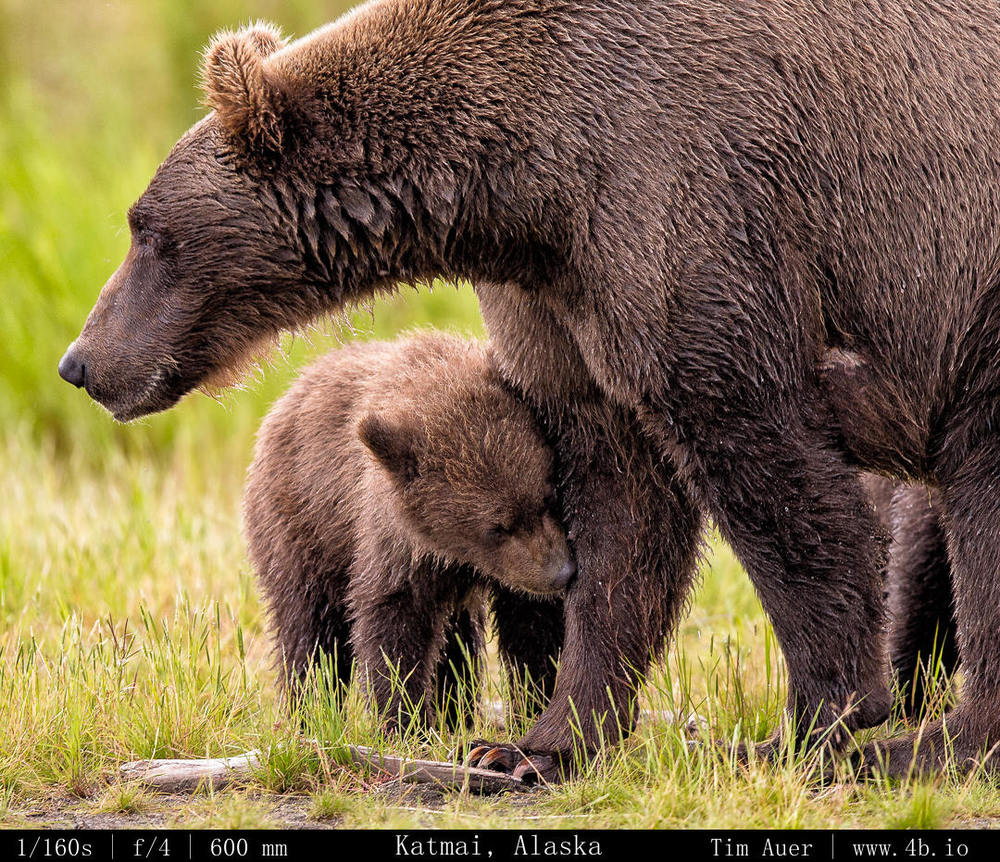

However despite these different styles of parenting, in the early morning of September 6, the two families I encountered appeared to be behaving in a similar manner; with caution. It is probably safe to assume that the rain and the gusting wind was the reason for the caution. Such weather conditions would desensitize a bear’s most evolved and honed skill, their olfactory perception, or sense of smell. When comparing the senses of a bear to a human, a bear’s eyesight is thought to be similar, while their hearing is slightly more sensitive. The nose is a different story. Bears have the most sensitive nose in the class mammalia, seven times more sensitive than a bloodhound. Which, I might add, is a dog breed specifically developed by humans for their keen scent. This means a bear’s nose may be up-to 70 million times more sensitive than the flap of skin hanging off our face we call a nose (plus or minus a few zeroes). When the mother can utilize her nose to the fullest, she is able to multitask more effectively and can keep her family safe, while allowing her cubs to scatter in a wider perimeter. During adverse weather conditions, these sows, with their sense of smell dulled, are essentially nose-blind to their surroundings and forced to rely on their vision to avoid danger. This meant everyone was kept in a tight groups and straying was forbidden. This made for interesting photography because the family, now a cohesive unit, would move in erratic patterns determined by wandering cubs and a herding mother. Ordinarily, the mother would allow the little ones to stray a bit, only calling them back if they went too far. But this cohesive unit was now going places they ordinarily wouldn’t go, such as on the sidewalks near the bridge. Resulting in a bear jam that lasted over 60 minutes.
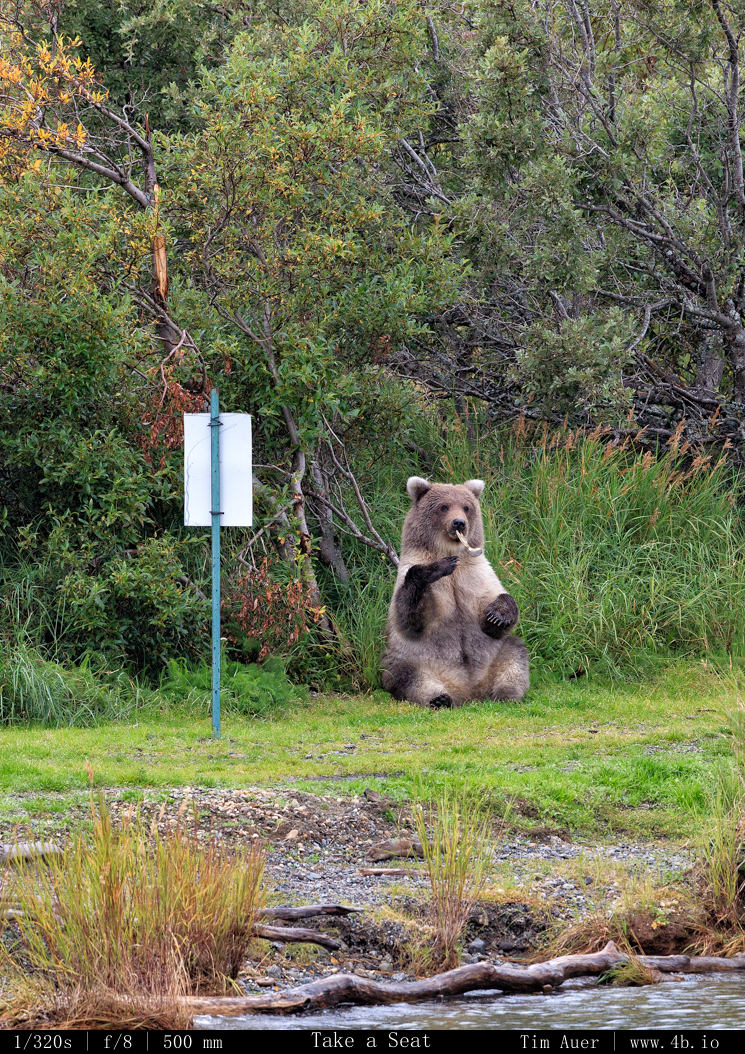

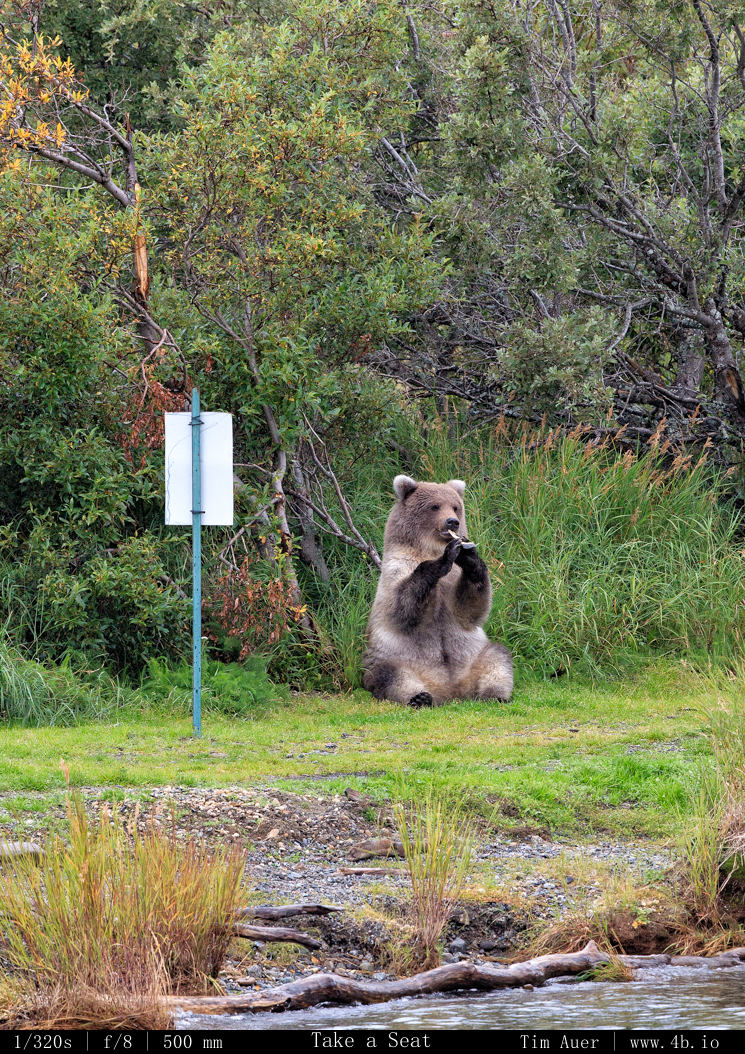



By afternoon, with the conditions improving, the sows began to relinquish their control and allow the cubs to stray further. At one point, the sow with two cubs even allowed the bridge to be between her and her cubs. This was interesting because I learned from talking with the ranger that this very sow had lost her cubs for an hour the previous week doing the exact same thing. The mother had left her cubs on a beach at the mouth of the river and went fishing upstream, eventually swimming under the bridge. After some time, she realized she had lost the scent of her cubs and became extremely agitated. The ranger explained how she was sprinting and splashing back and forth along the river side, huffing, jaw-popping and foaming at the mouth in distress and charging any bears that come close. This went on for about 45 minutes. Meanwhile on the opposite side of the bridge, throughout the entire ordeal, her cubs were happily playing together on the beach. Blissfully unaware of the emotional stress of their mother. Finally, the sow picked up the scent of her cubs and crossed back to the beach where she reunited with her cubs. Feeling relieved I would imagine. Some bear mothers never seem to learn!
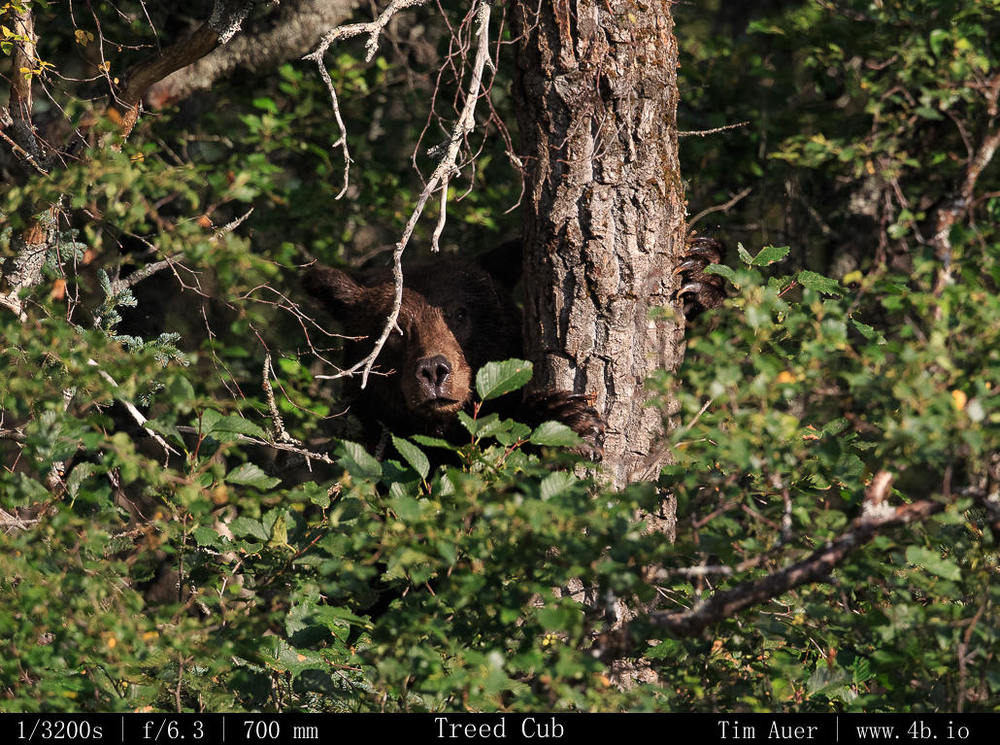
It was made even more interesting (this is very interesting) that the ranger explained this story to me, because on the following day we were able to witness a similar display of behavior by the same mother. This time it was up near the Brooks Lake. Upon arriving at the head of the Brooks River we saw many bears. A mother and her cubs across the river, and moving downstream. An adult male entering the river from our side and another adult male in the middle of the river directly in front of us. And finally a sub-adult male downstream and on the far side of river. The mother began to maneuver to the opposite side (our side) and further downstream to avoid these male bear obstacles. And eventually, one of her cubs became stranded on the far side of the river, while the mother+cub kept moving downstream and into the forest. The sub-adult male, standing in the river, was only 20 yards from the stray cub, who was on the river bank, barking for its mother. The cub even got spooked by the sub-adult and treed himself (following mama’s instructions I assume). This went on for about 30 minutes, until mother+cub returned to the river (about 20m downstream from where we were standing) to chase off the sub-adult and re-unite the family.
Mom’s Salmon School
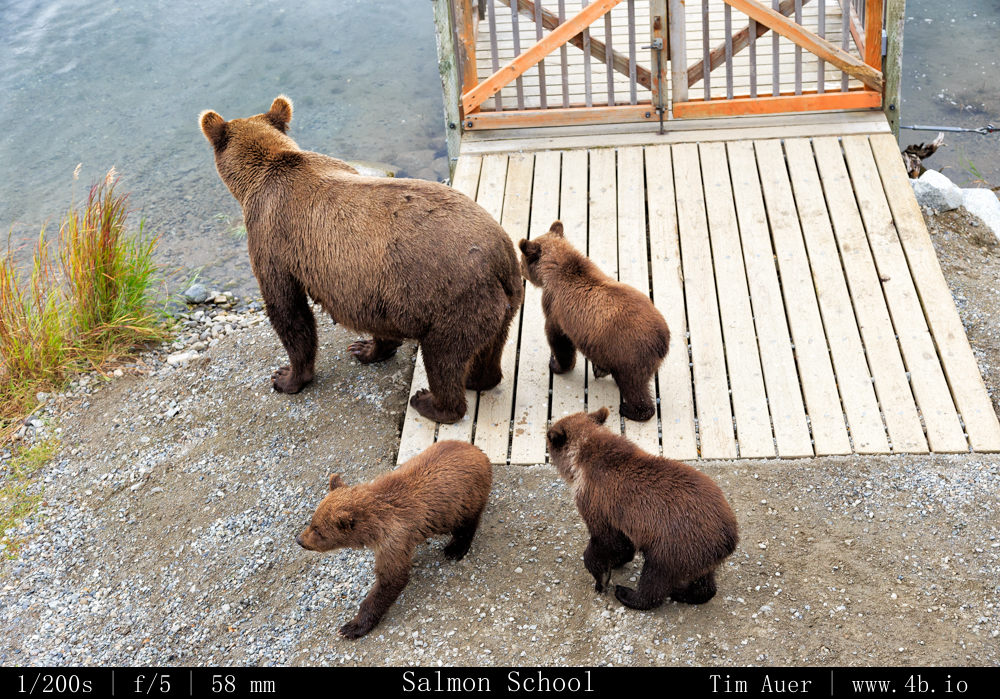
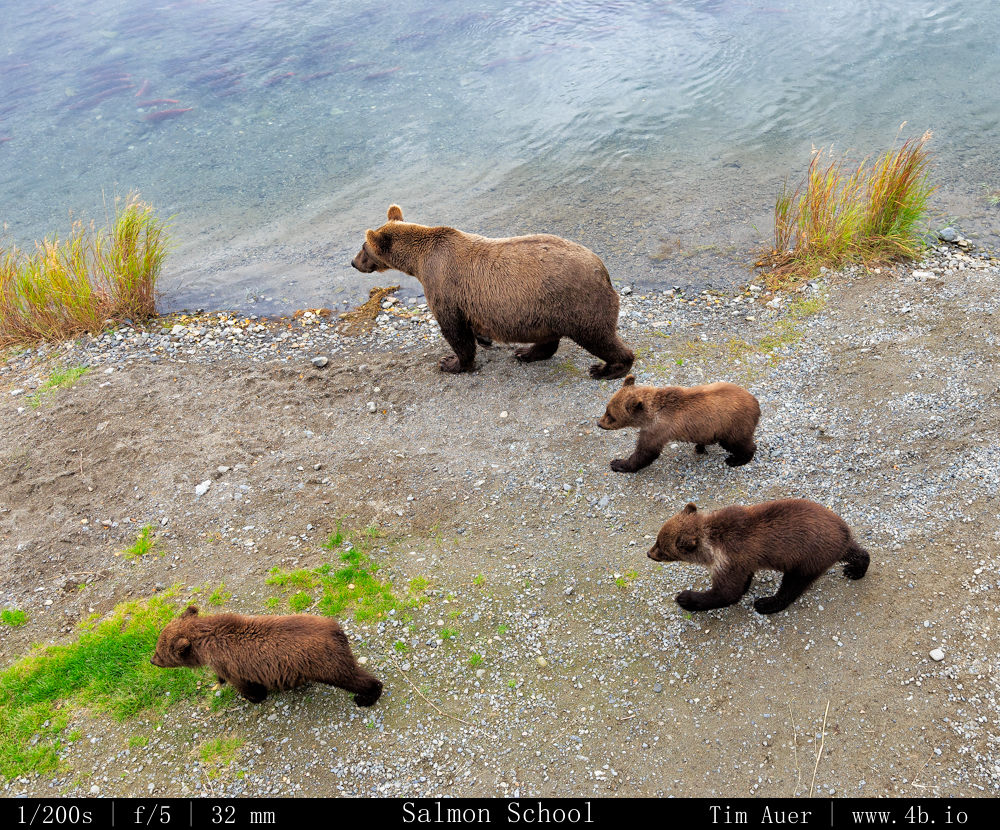
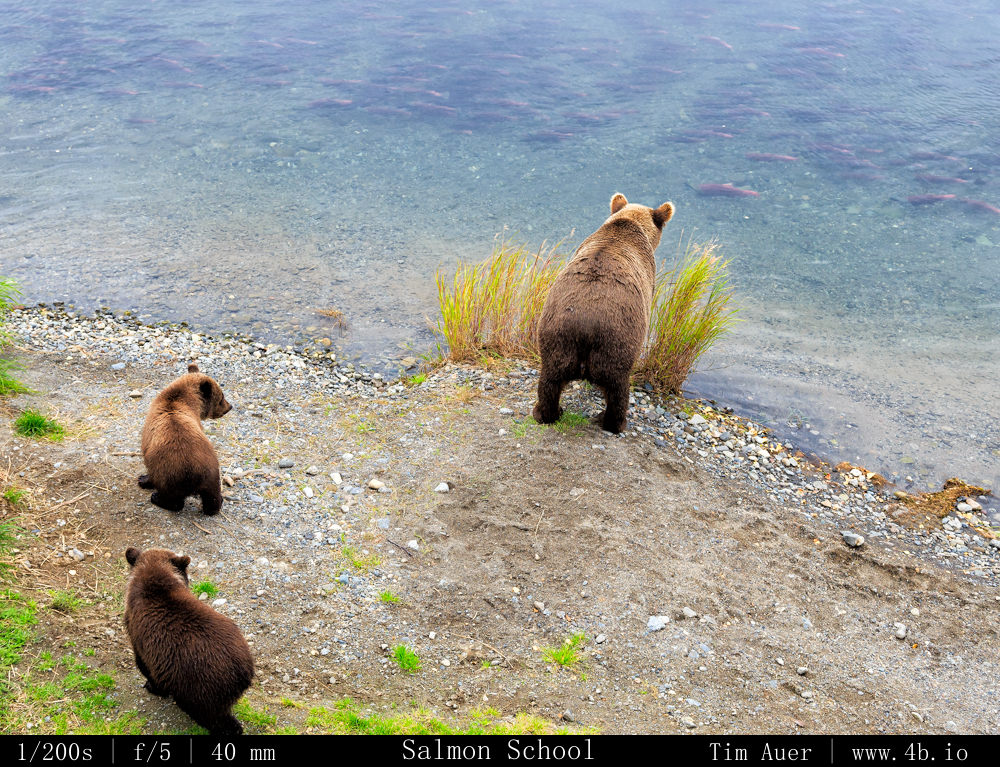

Brown Bears are typically a solitary species, roaming vast swaths of land without ever coming into contact with their kind. This is not the situation for the Bears of the Brooks River. The abundance of food (salmon) makes it possible for the bears to tolerate close quarters with one another. To maintain boundaries, the bears use a complex social hierarchy to determine status and position. This social hierarchy reflects itself in the personality of each bear and influences their behavior.
The two most important currencies in a bear’s world go hand-in-hand: (1) size and (2) strength. And the only way to become rich is to eat…a lot. The only way to eat a lot is to catch a lot of salmon. And the only way to catch a lot of salmon is to have a great teacher when you are a cub. That’s right, the biggest, strongest, and most ferocious bear in Alaska earned this title by listening to his mother…

The previous post discussed some of the fishing techniques observed. The next logical step would be to understand how and why each bear honed a different technique. It all goes back to the social hierarchy of the Brooks River bears. In July, the most dominant bear commands the most premier fishing spot of the pre-spawn salmon run, usually considered to be the “Lip” of Brooks Falls. From this position and radiating outward (downstream), the bears become increasingly less dominant. The least dominant bears don’t even get a foothold in the river, and scavenge the scraps of their more powerful kin. However, a bear does not begin his fishing career on the Lip, a sub-adult has no chance to displace an adult male. So before gaining “Lip” status, the bear must learn to successfully fish the other areas of the falls and the river. This is where the mother comes in.

During the 2-3 years a cub stays with its mother, the mother provides it with food and protection. Sometimes the mother gives a small piece of easily chewed meat, other times its the fish’s skin, or the whole body. This cub must figure out on its own what is good to eat (skin, muscle, roe) and what’s not (gills, innards). Sometimes the mother feeds the cub on the dry beach (the cub prefers this), other times she feeds the cub on a rock in the middle of the river, and sometimes she feeds it in the middle of the river, forcing the cub to swim in water above its head (the cub does not like this). Of course this is not without its risks, cubs don’t have the strength yet to be considered a strong swimmer like their mother. In fact, drowning is the leading cause of death for bear cubs in Katmai NP. But the cubs must learn to swim and they must learn to fish. These exercises and demonstrations, given by the mother, have an important purpose. These tried and true techniques ensure sure her cubs learn the skills needed to survive on their own.
